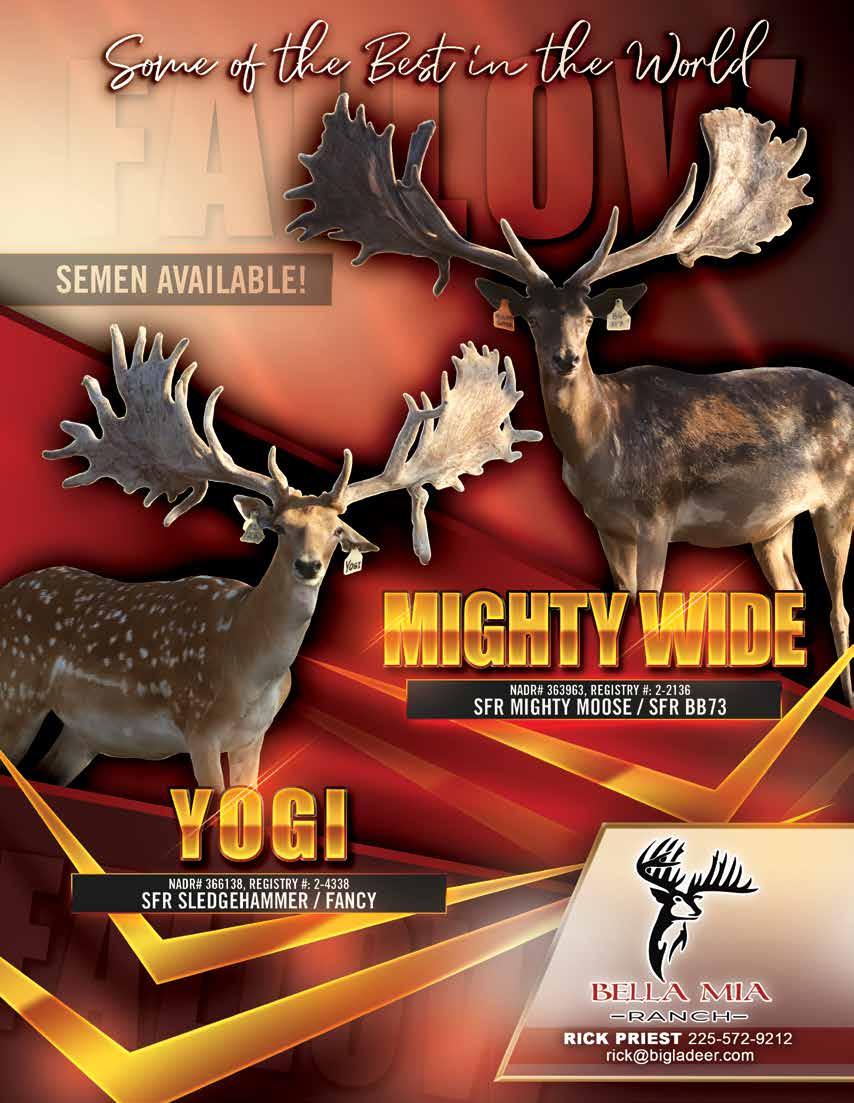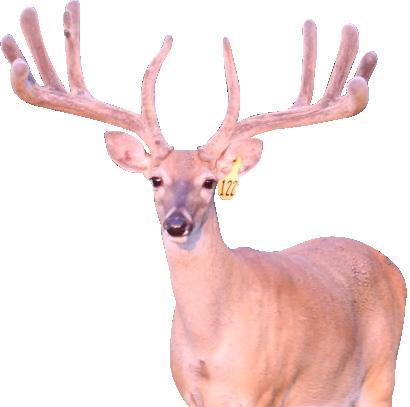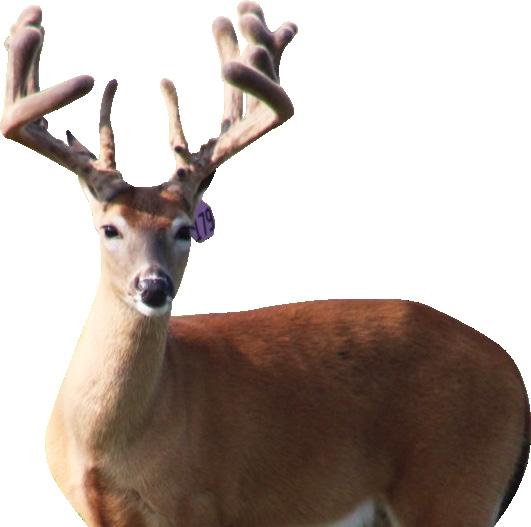




FEATURED FARM STORY Rocky Ridge Whitetails – Dedicated to Overcoming CWD
ALABAMA DEER FARMERS STRIVE FOR EFFECTIVE INSECT CONTROL
Sponsored by ADA
LEGISLATIVE RELATIONSHIPS MATTER
Sponsored by ILDFA














FEATURED FARM STORY Rocky Ridge Whitetails – Dedicated to Overcoming CWD
ALABAMA DEER FARMERS STRIVE FOR EFFECTIVE INSECT CONTROL
Sponsored by ADA
LEGISLATIVE RELATIONSHIPS MATTER
Sponsored by ILDFA









Greetings Fellow Deer Farmers:
Greetings Fellow Deer Farmers:

It seems like yesterday we were all preparing for fawn season and all that goes along with it. In the blink of an eye, now it’s nearly the end of summer and we are once again in the throws of another big part of our industry: breeding and hunting season.
The past few months have been very busy for the board members of PDFA. We had a successful visit at the Capitol for the annual Cornucopia event, as well as several visits with our elected legislators and members of the PA Department of Agriculture.
There has also been a lot of activity with us getting ready for the Keith Warren show that will air in 2025. Our Board has been all over Pennsylvania taking candid videos of establishments that support the PDFA as well as other deer farmers. They have also been super busy soliciting donations for our upcoming Fall Classic Sale. This year’s Fall Classic Breeder/Stocker and Benefit Sale will be held at the Blair County Convention Center located in Altoona, Pa. I would like to thank board members Jarrid Barry and Lloyd Stoltzfus, Co-Chairmen, along with their amazing team for all their hard work and absolute dedication to making sure this year’s Fall Classic Sale runs smoothly, surpasses expectations and is enjoyed by all who attend.
This year’s Fall Classic Sale will feature several outstanding guest speakers from Academia as well as the Department of Agriculture. PDFA is also planning to have a speaker from a private company who is working diligently to develop a live animal blood test for the detection of CWD.
As you know, our General Membership Meeting and election of new board members will be held at our Fall Classic Sale on September 6, 2024. All current PDFA Members are invited to attend and vote for those running for election.
Although I have superstars to work with, we cannot do it alone. We collectively need your help. Contact any board member or email us at office@padfa.com for more information on how you can become more actively involved.
John S. Manta President, PDFA

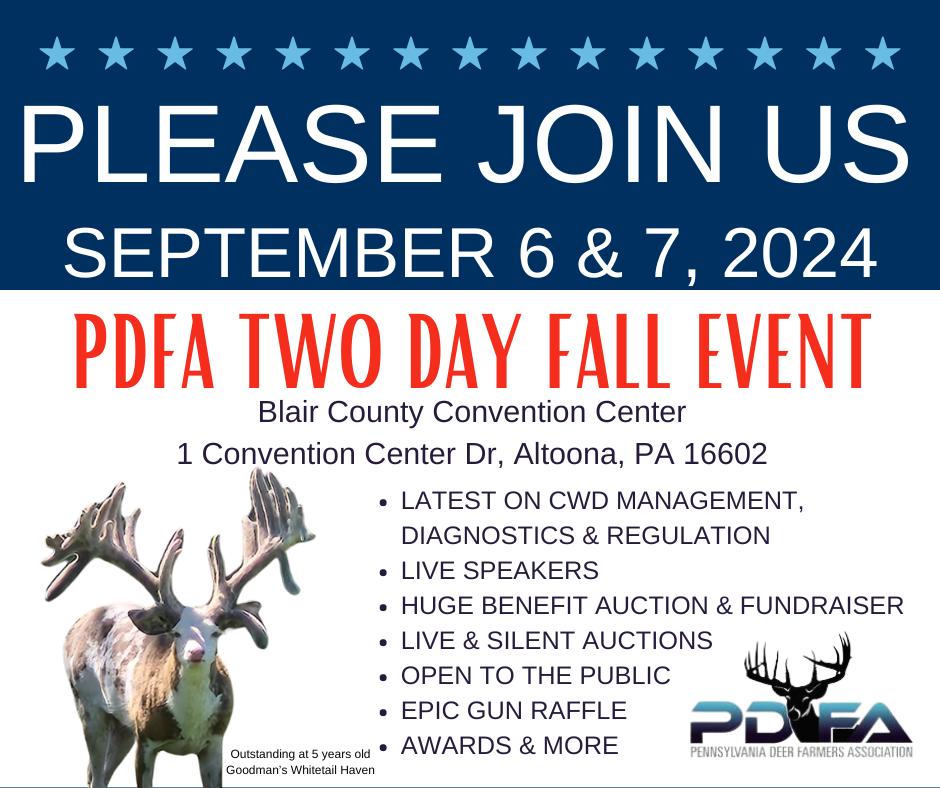


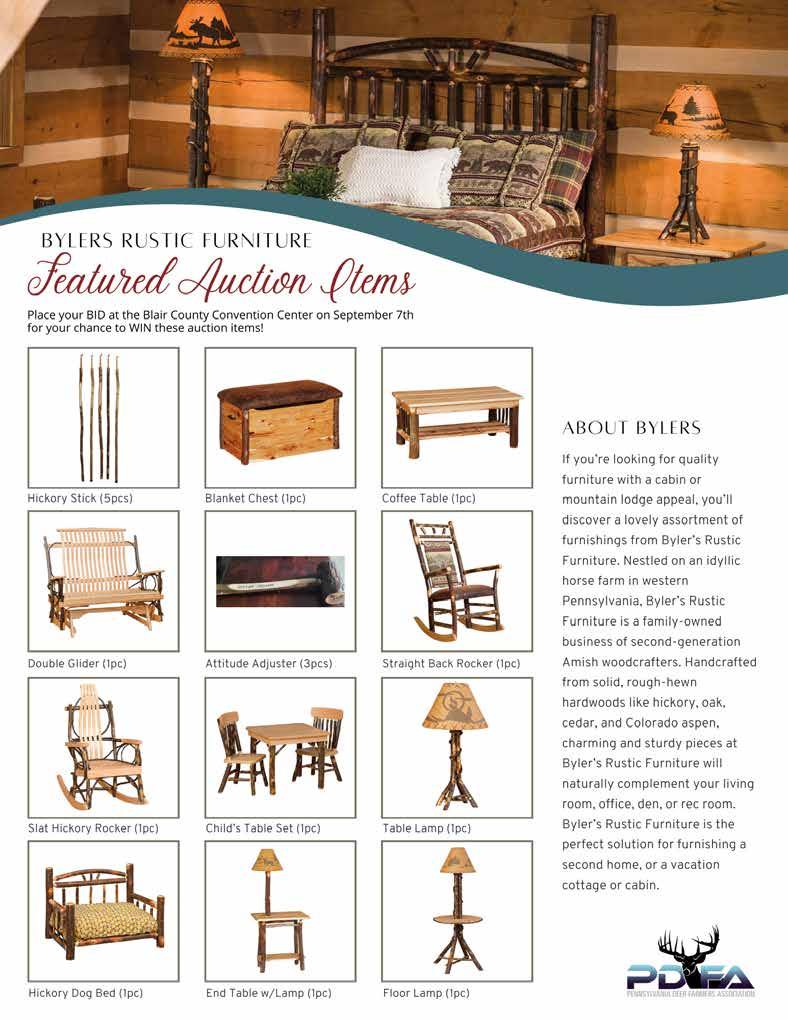








PRESIDENT
John Manta (2024)
John Manta
Julie Acres Deer Farm
Wolf Bridge Road
Carlisle, Pa. 17013
Cell: 717-448-8764
Email: julieacres@aol.com
Bruce Snyder (2025)
Bruce Snyder
Snyder’s Whitetails
2358 Produce Rd.
Selinsgrove, Pa. 17870
Cell: 570-259-0051
Email: snyderswhitetails@yahoo.com
Tucker Sellinger
Tucker Sellinger
The Valley Deer Farm 1506 Wells Road
Williamsport, PA 17702
Cell: 570-660-0143
Email: tuckersellinger@aol.com
Mick Goodman
Goodman’s Whitetail Haven
751 Logan Rd.
New Stanton, PA 15672
Cell: 724-493-1040
Email: gwhaven@hotmail.com
Bob Byers
Bob Byers
Triple B Whitetails
455 Byers Lane Knox, PA 16232
Cell: 814-229-0226
Email: bob.byers@agriking.com
John Fisher
World Class Genetics
152 Meadow Lane Loysville, Pa. 17047
Cell: 717-582-1896
Email: 5starjohndaniel@gmail.com
LEGISLATIVE COUNSEL
Andy Goodman, Partner
Milliron Goodman
Governmental Relations
200 N. Third St.
Harrisburg, Pa. 17101
Office: 717-232-5322
Email: andy@millirongoodman.com
VICE PRESIDENT
Lloyd Stoltzfus (2024)
Walnut Ridge Whitetails
142 Churchtown Rd. Narvon, Pa. 17555
Office: 717-768-3471
Email: wrwhitetails@yahoo.com



Isaac Martin (2024)
Bambi’s Paradise
230 Dusty Hollow Lane
McClure, Pa. 17841
Cell: 570-412-0064
Email: ike@pikrite.com
Josh Newton
Josh Newton
Cervid Solutions, LLC
Red Ridge Whitetails 15223 Route 87 Hwy
Williamsport, Pa. 17701
Office: 844-478-2870
Cell: 484-951-3229
Email: jnewton@redridgewhitetails.com
Jarrid Barry
Powder Ridge Outfitters PO Box 6
Hollidaysburg, PA 16648
Cell: 717-821-0669
Email: powderridgeoutfitters@gmail.com

PDFA ADMINISTRATOR
Tess Stevenson PO Box 394
Harrisburg, PA 17108
Office: 717-801-0533
Email: office@padfa.com

LEGISLATIVE COUNSEL
Kerry Lange, Senior Associate
Milliron Goodman Government Relations
Kerry Lange, Senior Associate
200 N. Third St.
Harrisburg, Pa. 17101
Office: 717-232-5322
Email: kerry@millirongoodman.com
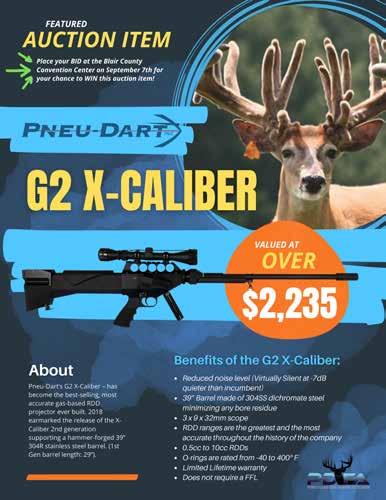
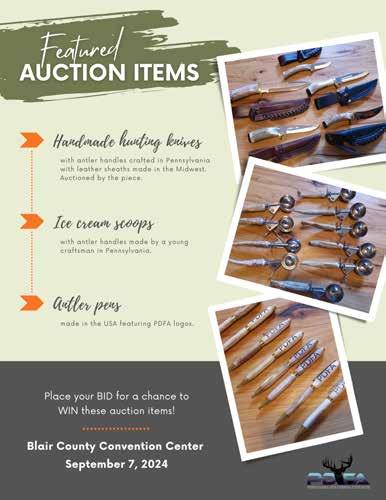


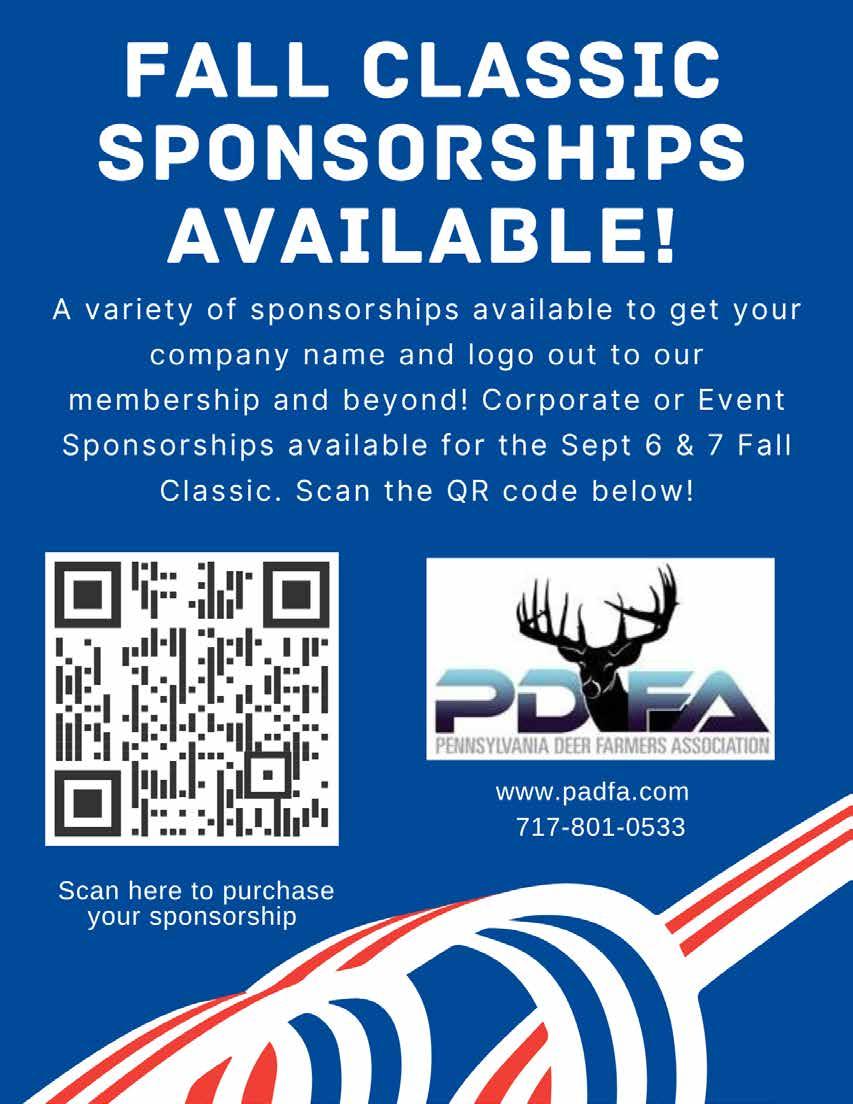
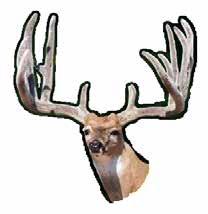
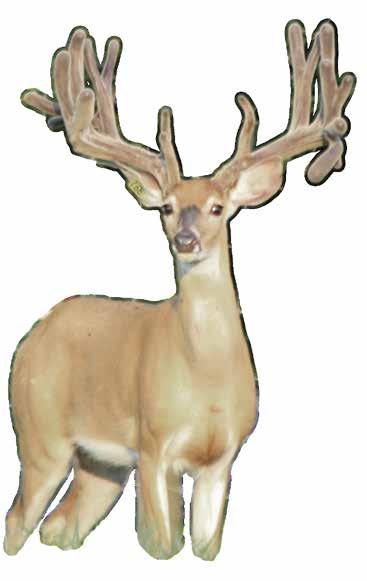


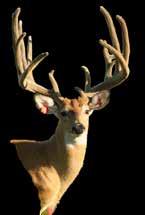

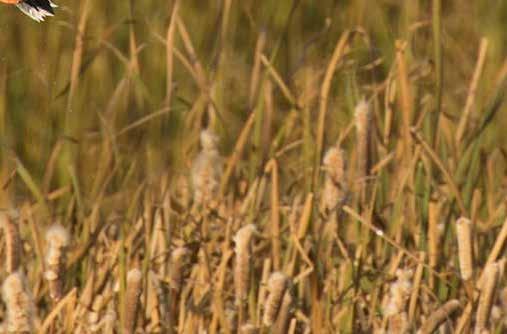








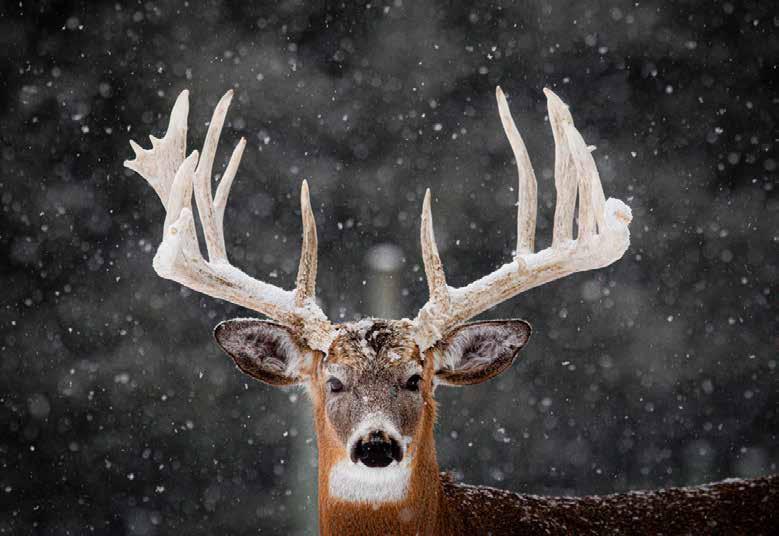
As modern society began to unfold and industrial food production evolved, the dependency of many on the hunter-gatherer lifestyle faded and hunting transitioned from a necessity to a popular interest and hobby.
Fast forward a few thousand years, without proper regulations in place, utilization of our wildlife species drove many to the brink of extinction. The most notable case is that of the whitetail deer, arguably the most popular big game animal on the planet. With population numbers reaching record lows, deer were nearly eradicated!
Thankfully, the 20th century pioneers of modern-day hunting and conservation, such as Theodore “Teddy” Roosevelt and Aldo Leopold, recognized the importance of North America’s natural resources. Thus, was born an alternative to the exploitation model that was occurring, the North American Model of Conservation. While the evolution of this model was developed and implemented, one core tenant stood above the rest: Scientific Management of Wildlife. The best science available will be used as a base for informed decision-making in wildlife management. It’s important to note that management objectives are developed to support the species, not individual animals. With common vision, those involved forged the way for conservation as we know it today.
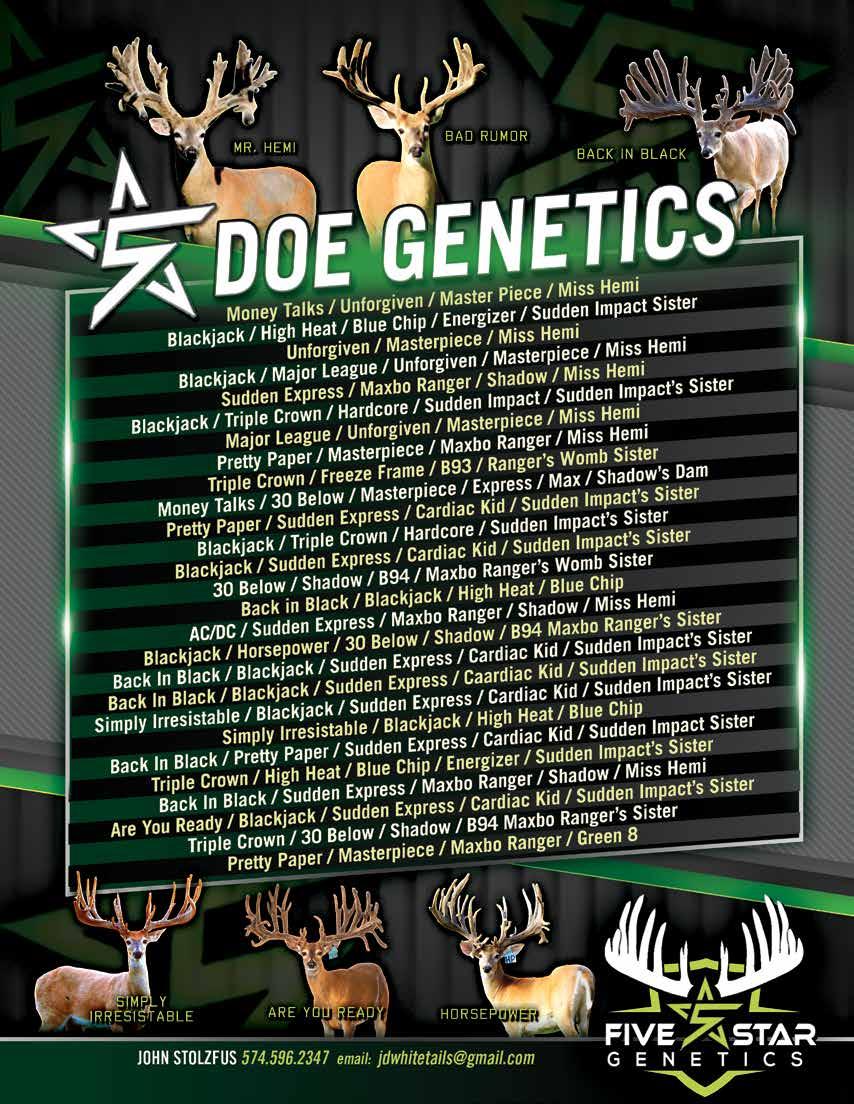
On the brink of extinction, landowners, ranchers, biologists and conservationists set out to protect deer from total decimation. Funding initiatives, land designations, bag limits, translocations and many other efforts began. Despite all the challenges that arose, including drought, habitat loss and disease, their efforts were ultimately successful and the deer population began to rebound.
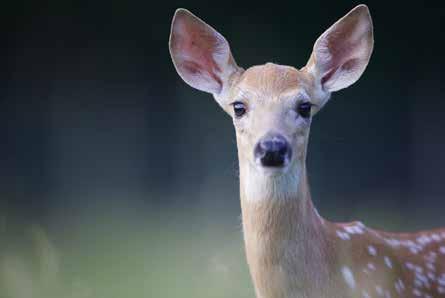
However, in 1967, a new threat arose, this time from beyond the influence of hunters and outdoor enthusiasts. A Colorado-based government research facility first identified Chronic Wasting Disease (CWD). Since 1967 CWD has spread to 34 US states, several Canadian Provinces and multiple countries around the globe threatening long-term health of cervid populations. With limited tools, researchers began exploring this prion disease from many aspects. Some, focused on identification, others studied the prions themselves. A smaller group took a pragmatic approach looking into our history to find potential answers.
Our nation’s early settlers raised sheep and goats across our beautiful landscapes. As time passed, a disease known as scrapie was identified in Europe in the 1700’s and later in the USA in the 1940’s. This discovery of what some today call a “close cousin” to CWD marked the beginning of the prion livestock disease journey. Fortunately, with advancements in science and technology, a genetics-based solution was discovered. It was realized that sheep had certain genetic markers that made them more resistant to being infected with scrapies. Through the implementation of this gene-marker technology, the sheep industry has been successful at eradicating scrapies from their herds across North America. This begged the question: Could the CWD crisis be resolved by looking at our past scientific success with scrapies?
Over the past decade, renowned geneticist and Professor at Texas A&M University, Dr. Christopher Seabury, executed a novel research project. His groundbreaking peer-reviewed research was released in April 2020. Dr. Seabury mapped the entire genome of the white-tailed deer in relation to CWD susceptibility. 200,000 genetic markers were identified to aid in unlocking the answers to CWD. After further refinement, a commercially available 50,000-marker testing array, known as Chronic Wasting Disease-Genomic Predictive System (CWD-GPS) was developed and released for utilization across the country. This revolutionary technology provides a simple and efficient result, a Genomic Estimated Breeding Value (GEBV), of the tested animal. This GEBV represents the animal’s durability or susceptibility to CWD.
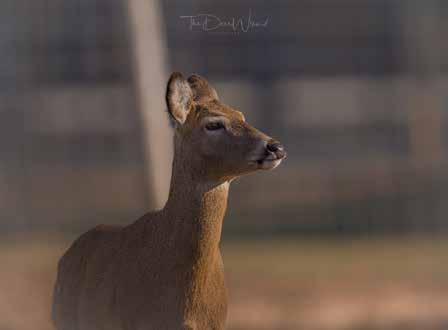
As part of the research and development of Accurate Genomic Predictions for Chronic Wasting Disease in U.S. White-Tailed Deer, Dr. Seabury completed his work with a United States Department of Agriculture double-blind study. USDA supplied genetic material from hundreds of whitetail deer for analysis using CWD-GPS. Upon completion Dr. Seabury provided USDA with his results. He was able to achieve an 81% accuracy rate for which animals had CWD and which did not. These results yielded unprecedented optimism from hunters and deer farmers alike.
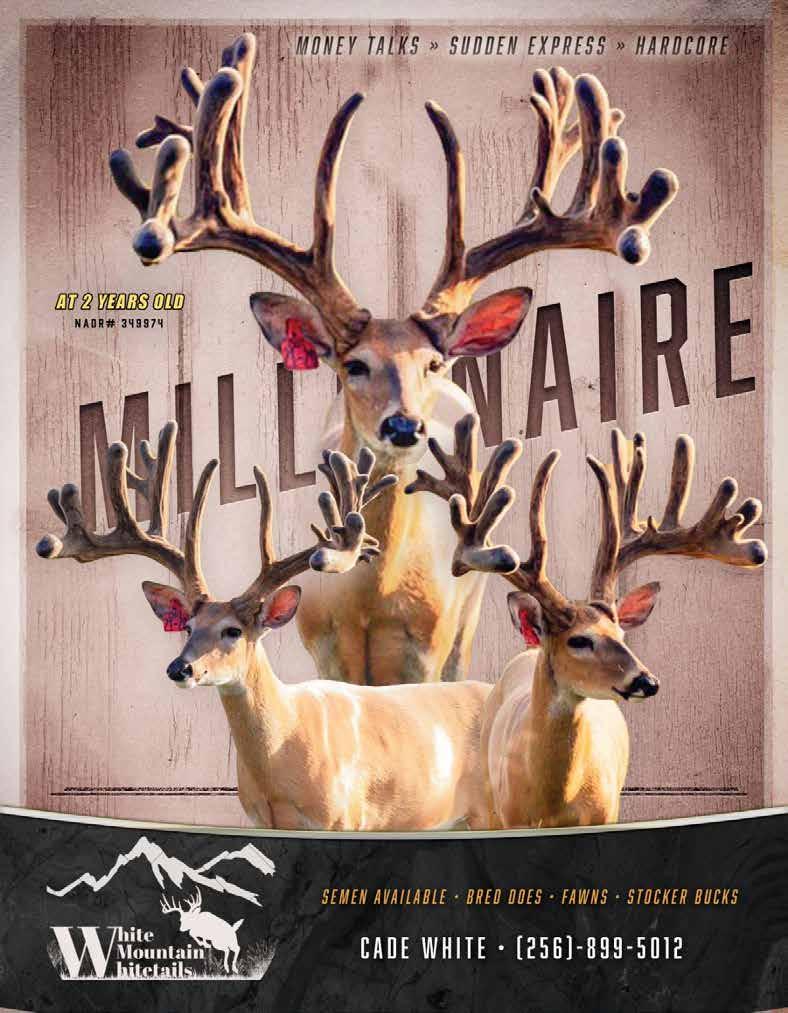
Currently, the most popular management strategy among wildlife agencies is to drastically reduce populations where disease has been discovered to limit the prevalence and spread. However, the adoption and widespread implementation of Dr. Seabury’s technology may provide a more effective, permanent solution to the long-term management of CWD and its eventual suppression in both public and private whitetail herds.
The preservation of the white-tailed deer is something worth fighting for. Hunters and whitetail enthusiasts relish the challenge to save this species. Amongst this group of conservationists, deer farmers and private deer managers have emerged as willing partners in the whitetail conservation story. In fact, private deer managers and farmers are already actively utilizing this technology to facilitate the production of CWD resistant animals in their herds.
These existing farms and ranches are ideal locations for the implementation of Dr. Seabury’s CWD-GPS technology. It’s possible that these working properties hold the key to unlocking what nearly every wildlife agency has been yearning for: a long-term solution to CWD. Hunters, deer farmers, private deer managers, wildlife agencies, conservation groups, and our state and federal governing bodies all have the responsibility to consider incorporating this genetic technology into policy programs that offer potential to reduce the negative impacts of CWD and ultimately conserve the North American whitetail deer population. By reflecting on and mirroring the collaborations of the 20th century conservation movements, Pennsylvania stakeholders can lead the way and help bring an end to CWD.
Authored by: Jarrid Barry, Powder Ridge Outfitters & Josh Newton, The Deer Wizard
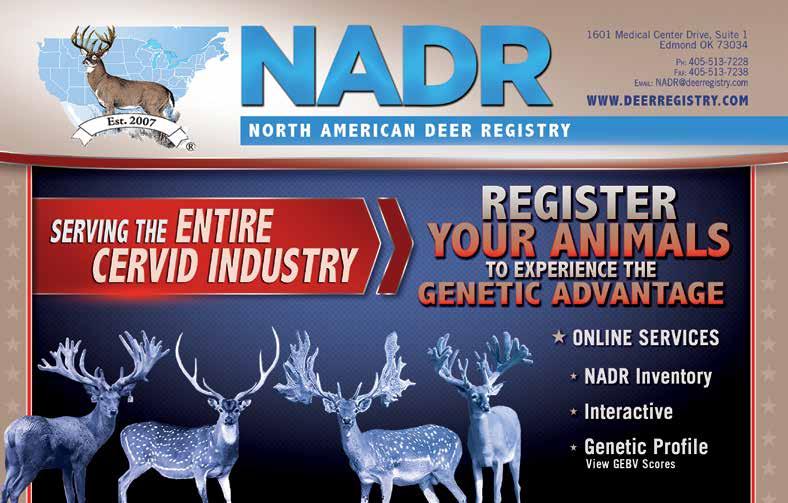
Phone (260) 248-1684

#1272/392131
#1210/392086
#1300/392156
#1114/392442
#1150/392449
#1143/392447
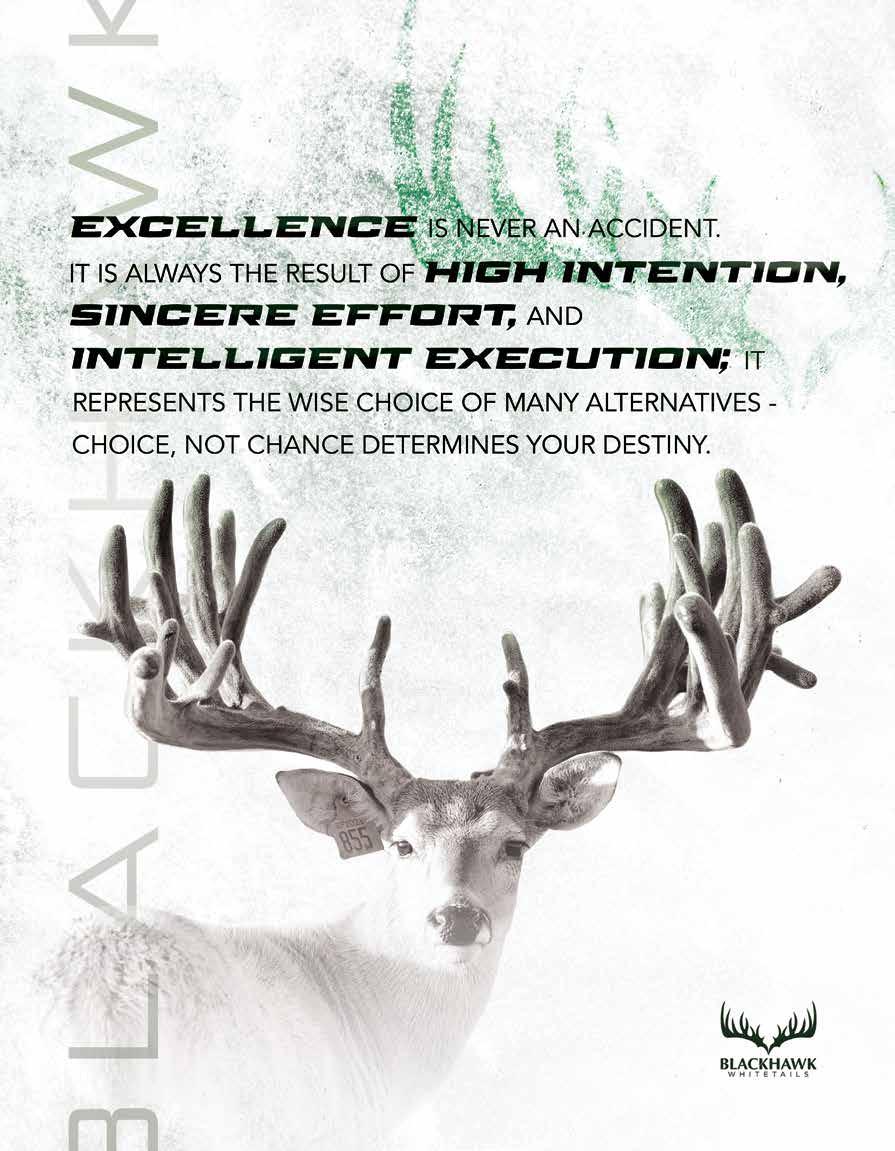


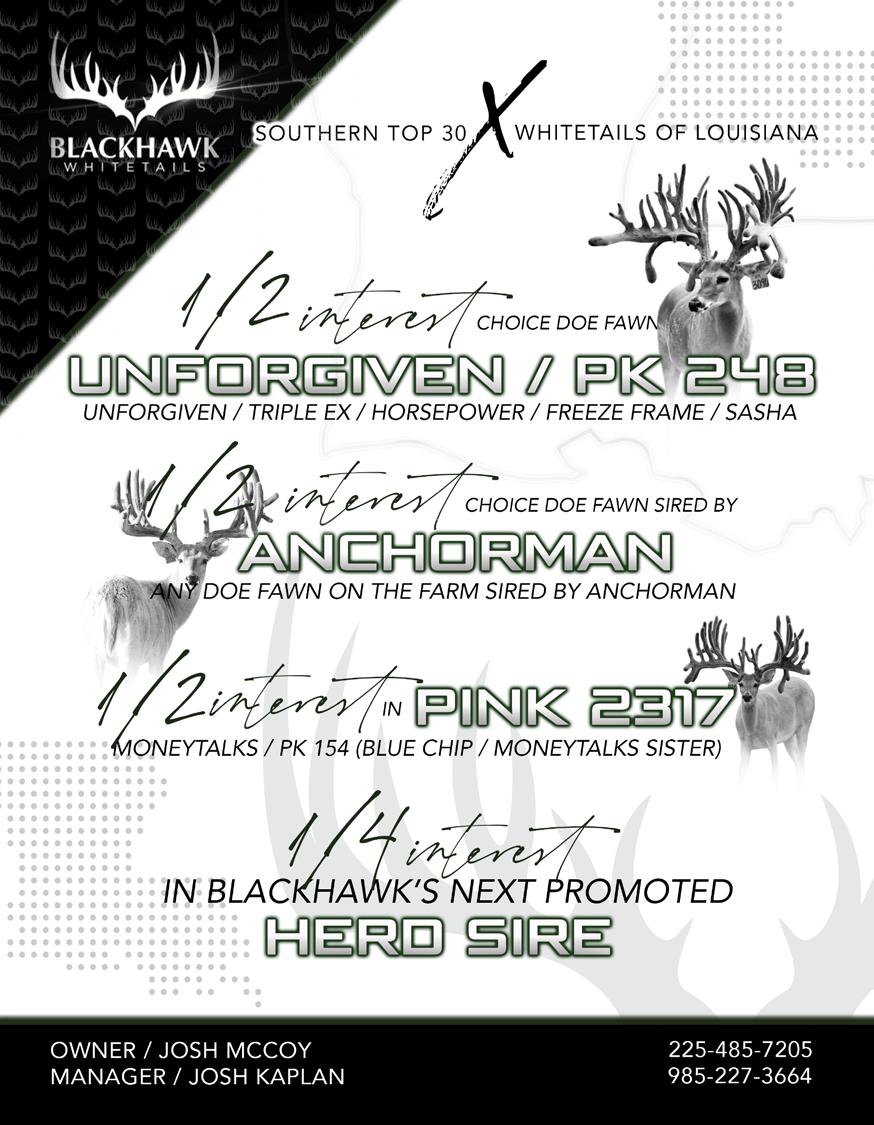


A big thank you to the four candidates that accepted their nominations to be a part of the PDFA Board of Directors! These four candidates will fill the four seats that were up for reelection or vacated. We are grateful to see so many members looking to continue and or up their involvement with our association in a leadership role. Candidates have all answered three questions for you to get to know them better before voting in September. Below are all of their answers candidate by candidate.
General Bio (Tell us a little about yourself/operation/time in the industry, etc.)
My name is Isaac Martin. I am currently on the board and also serve as secretary. I have been a deer farmer since 1999. We currently have 35 head of deer plus fawns. I also have a farm background.
What are some skills you can offer to help PDFA in its mission to help promote and preserve the cervid industry in PA?
I am able to be a team player to help with whatever needs doing.
What is one topic you are passionate about regarding the deer industry that you would like to help champion in your role as a PDFA Board of Director?
I would like to find a way to make the PDFA more valuable to general membership.
General Bio (Tell us a little about yourself/operation/time in the industry, etc.)
My name is Jason Stefanowicz of Middlebury Center, Pa in Tioga County. My wife, Amy and I have been in the deer business for about 5 years now. We try to raise the best genetics in the country that we can afford. ln turn I try to return the favor to other deer farmers and offer them good quality genetics wether it is deer or semen at affordable prices so we can all enjoy raising big deer without breaking the bank. Deer farming is my full time job as well.
What are some skills you can offer to help PDFA in its mission to help promote and preserve the cervid industry in PA?
Being this is my full time job all my effort are put into deer farming. My wife Amy and I are always traveling the country promoting our business. While doing so we have made many friends and contacts throughout the industry. Doing so I believe helps others be more aware of the great things we are doing here in PA and the Country for the deer farming industry. I have committed my time to this industry and plan on doing my part in promoting and preserving deer farming in PA and the country.
What is one topic you are passionate about regarding the deer industry that you would like to help champion in your role as a PDFA Board of Director?
I would like to get involved in the auctions we have and help promote and raise money for PA deer farming. I would like to see PA being a destination for other farmers to buy deer from and maing our auction one of the best in the country by helping it grow in size and events that bring in people from all over the country. I would also like to help inform the public of what we do so they an better understand our business and to allow people to understand we do not grow CWD on our farms. We try to prevent it.
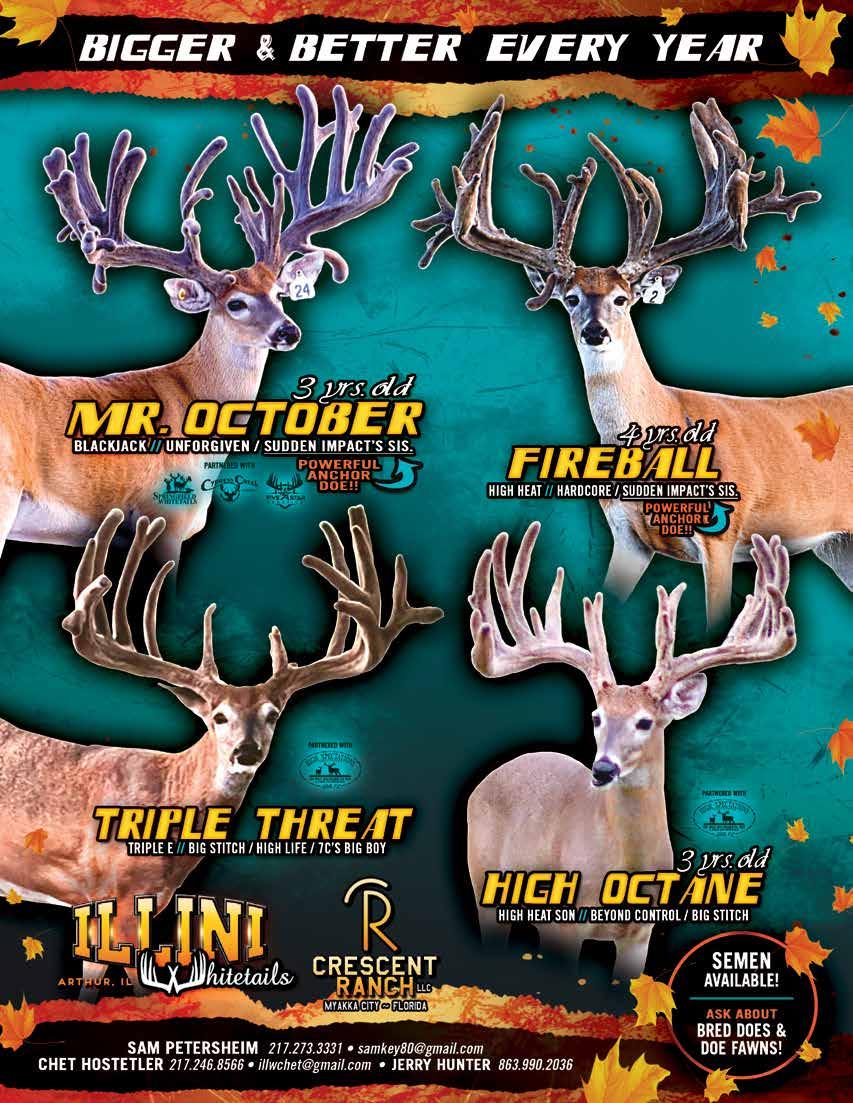
Robert Monheim
General Bio (Tell us a little about yourself/operation/time in the industry, etc.)
My name is Robert Monheim and I have been deer farming for 27 years, I got into deer farming because I volunteered at a wildlife rehab center and I worked with all different animals and fell in love with the fawns, ended up bring them to my farm and and here I am today. Joined the PDFA in early 2000s and have been a member since.
What are some skills you can offer to help PDFA in its mission to help promote and preserve the cervid industry in PA?
I have served on the executive board for the sheet metal workers Local #12, also VP of the sheet metal workers union, also the recording secretary for local #12. Been a member of the Parks TWP along with EMT training 2007 and was the VP of the fire dept. Held the office from 2009-2015 Parks twp supervisor, Police commissioner, and road master. I will do what is best for the PDFA and the Cervid industry.
What is one topic you are passionate about regarding the deer industry that you would like to help champion in your role as a PDFA Board of Director?
I would like to help prospective deer farmers that are new to the industry along with my fellow deer farmers, in any way that I can, and I want to learn and share skills with my fellow farmers and for the future of the industry.
Kelly Monheim
General Bio (Tell us a little about yourself/operation/time in the industry, etc.)
My name is Kelly Monheim, I have been deer farming with my husband for 10 years (he has been deer farming for 27). We have two deer farms: Monheim Family Farm and Monheim Whitetails. Our herd consists of 72 head of deer. I have been working with livestock for most of my life. I am very passionate about the deer and the deer industry. I want what is best for the deer and the industry.
What are some skills you can offer to help PDFA in its mission to help promote and preserve the cervid industry in PA?
I have dedication, I am resilient, organized, and I am passionate about promoting and preserving the CERVID industry. I am willing to do what is best for the PDFA.
What is one topic you are passionate about regarding the deer industry that you would like to help champion in your role as a PDFA Board of Director?
I am very passionate about the deer industry as a whole. I am going to try and do my best for the PDFA and the entire industry.
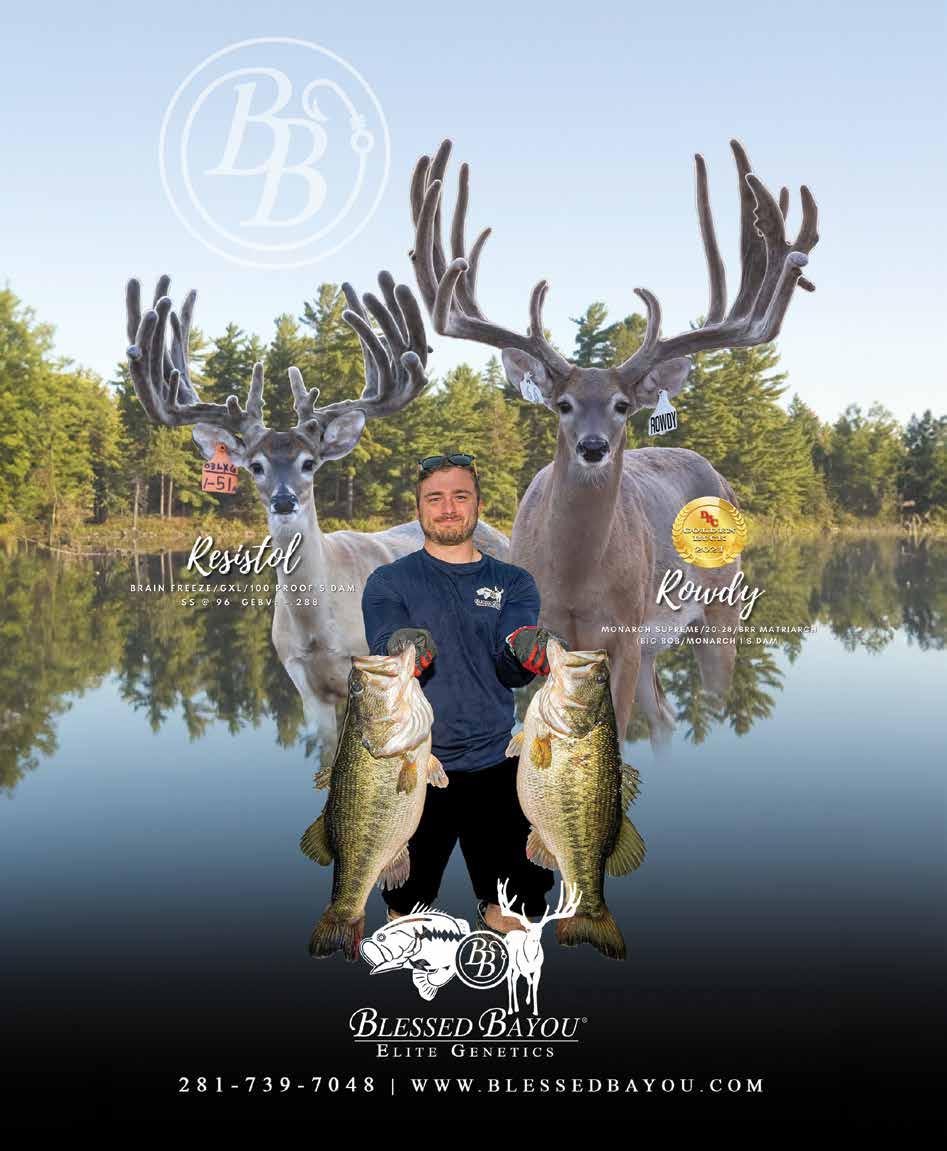



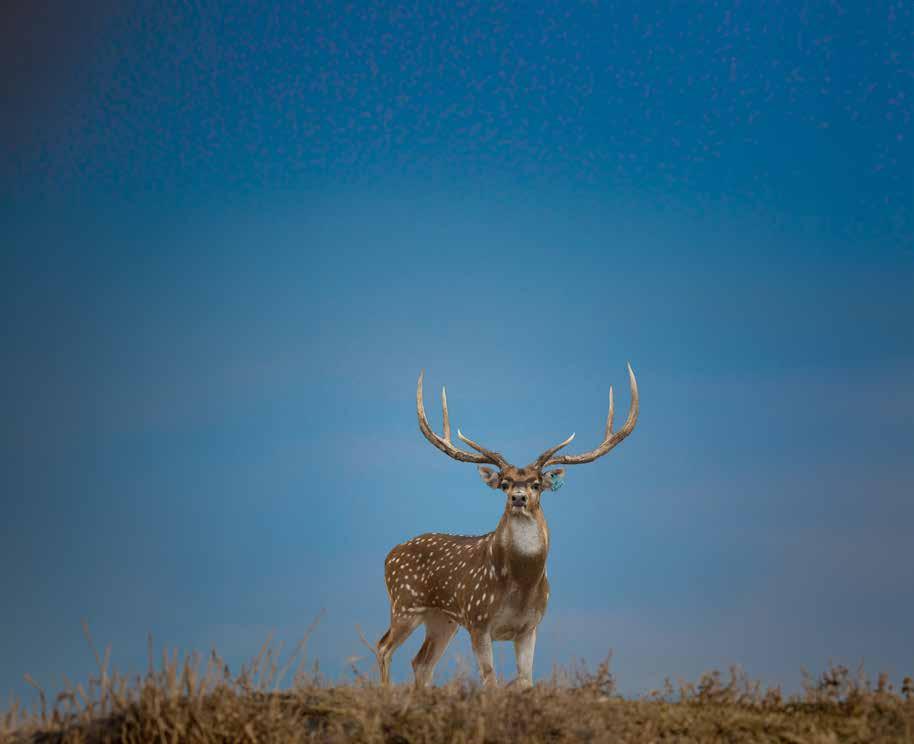


Disclaimer: The information contained in this advertisement is general in nature and is intended for use as an informational aid. It does not cover all possible uses, actions, precautions, side effects, or interactions of the medications shown, nor is the information intended as medical advice or for making an evaluation as to the risks and benefits of using a particular medication. You should consult with your veterinarian about diagnosis and treatment of any health problems. Information and statements have not been evaluated by the Food and Drug Administration (FDA), nor has the FDA approved the medications to diagnose, cure or prevent disease. Medications compounded by Mixlab are prepared at the direction of a veterinarian. Mixlab compounded veterinary preparations are not intended for use in food and food-producing animals. Mixlab does not recommend, endorse or make any representation about the efficacy, appropriateness or suitability of any specific dosing, products, procedures, treatments, services, opinions, veterinary care providers, or other information that may be contained in this advertisement. Mixlab is not responsible nor liable for any advice, course of treatment, diagnosis or any other information, services or products that you obtain through this advertisement.
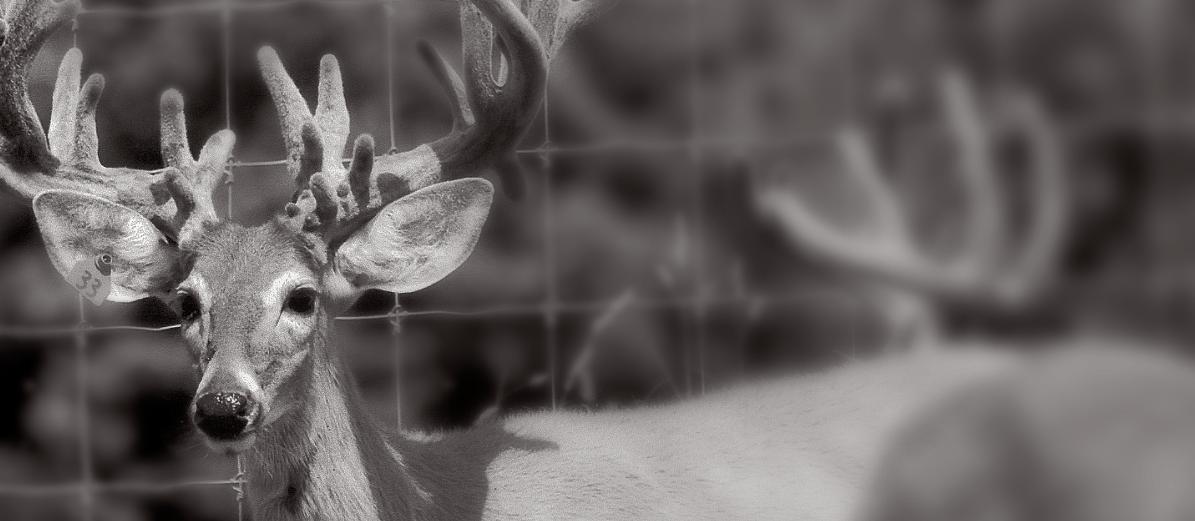
SCIENTIFICALLY FORMULATED NATURAL SUPPLEMENT TO HELP GROW LARGE, HEALTHY DEER AND BIG ANTLERS!
Nutrient rich formula contains highly bioavailable ingredients, including our proprietary calcium/phosphorous complex with Antler D TM, that are required to support body and bone growth, especially for fast growing bucks
Contains probiotics and targeted enzymes to support gut health and proper digestion
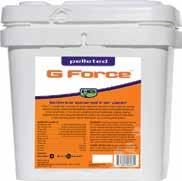
Available in pellet or powder that can be top dressed or mixed in feed. Great for antler growing season and young bucks, too
PRECISELY FORMULATED TO HELP MAINTAIN A NORMAL AND RELAXED DISPOSITION IN ALL CERVIDS
Provides optimal levels of magnesium, Vitamin B1 and inositol to promote calmness and provide help for restless animals
Contains no herbals, tryptophan or chemicals, eliminating concerns of unwanted side effects
Use PeaceMaker to “keep the peace” during pre-rut, rut, transportation, weaning and anytime destructive behavior may occur
POWERFUL SOLUTION FOR HEALTH & PRODUCTIVITY
Helps maintain digestive health and productivity
Contains micro-encapsulated probiotics, targeted enzymes and a novel fiber complex
Use in does before fawning, during lactation and all cervids during times of environmental stress

HELPS PRODUCE HEALTHY, FAST GROWING FAWNS
Helps maintain normal digestive health
Supports a healthy immune system
Feed powder for 14 days to bottle fed fawns
Paste is ideal for fawns left on does

FAWN & DEER XTR™
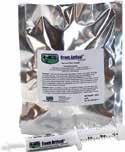
ROBUST FAST RESPONSE FOR FAWNS & OLDER DEER
Innovative formula delivers max digestive support, especially in newborns
Rapidly delivers help for GI health and a functioning immune system
May also be used post-tranquilization to support healthy recovery

THURSDAY & FRIDAY, AUGUST 15 & 16
THURSDAY AUGUST 15
7:00AM Booth Setup
9:00AM Booth Visitation
12:00 Free Lunch
1:00PM Auction Starts with Elite 25 (Selling approximately 150 Lots)
4:30PM ..................................................WDFO Annual Membership Meeting Followed by Speakers
5:00-6:30PM Dinner Served (ticket required)
7:00PM Donkey Ball Game
10:00PM Exhibit Hall Closes
FRIDAY AUGUST 16
7:00AM Doors Open
9:00AM ................................................. Auction Starts
11:30-12:30 Free Lunch
4:30-6:30PM Dinner Served (ticket required)
6:30PM WDFO Benefit Auction (Followed by Raffle Drawings)
App. 9:30PM Event Ends
Schedule is subject to change. Stay tuned for updates.
TABLES {8 PEOPLE}
$1000 Table purchase includes all meals for event. Each table wins a gun & gets 8 UTV tickets. 8 cards of basket raffle tickets + other free gifts.
INDIVIDUAL SEATS
can be purchased for gun tables for $150 per seat. There will also be plenty of free seats available if you do not wish to purchase a table.
BOOTHS {10X10}
$250
Booth space will be very limited.
LOTS OF RAFFLE PRIZES
WOMEN’S RAFFLE
Sewing Machine
$500 Cash Mixer
HUGE BASKET RAFFLE
JOHNNY BLIND RAFFLE
MAIN RAFFLE
Kawasaki Mule
Stihl HT 135 Pole Saw
Blackstone Griddle
St. Croix Rod & Reel
Solo Stove ‘Bonfire
GUN BLITZ
Draw subject to availability.
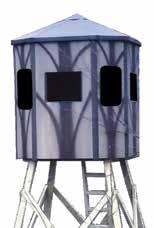
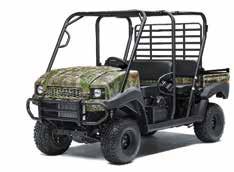




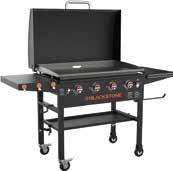
Written By: Gail Veley
John Ervin Stoltzfus has an unwavering passion to help all deer farmers be successful. Through the ability to run CWD susceptibility genetic tests on deer, John Ervin, 39, owner of Rocky Ridge Whitetails in Narvon, Pennsylvania, feels success may now be more easily attainable for anyone in the deer industry who is striving to raise healthy CWD free herds. Now in his 27th year as a deer farmer, Stoltzfus has felt the pressure over the years from CWD regulations, leading him to find genetic solutions for his farm that could be modeled by anyone.
“Since Dr. Christopher Seabury has done research to determine genes that reduce CWD susceptibility, The Pennsylvania Department of Agriculture is finally looking at solutions which include not depopulating an entire herd if a CWD positive is detected,” John Ervin said. After being introduced to Dr. Haley from Midwest University seven years ago, he started breeding for resistance markers after it
was subsequently determined that “GG” deer are those most susceptible to contracting CWD. In recent years, Dr. Seabury finalized his research from many CWD positive deer farms, choosing the more highly infected herds that appeared to be positive for a longer period of time. In 2020, when Dr. Seabury made his 50,000 genetic markers genomic test (GEBV) publicly available, John Ervin immediately got his breeder bucks and doe tested and continued his campaign to breed toward less CWD susceptible deer. While he understands this genetic test isn’t 100% bullet proof, he is hopeful once he has a complete herd with all “GG” markers removed and better GEBV’s, he will have low risk on his farm of any deer contracting CWD. He has never had CWD positive detection on his farm and he is trying to do everything in his power to keep it that way. The closest wild deer positive detection is currently more than 50 miles away.
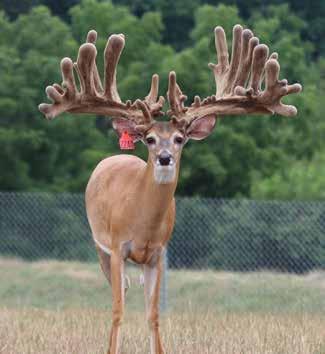
John Ervin has experienced and has seen a lot of ups and downs in his 27 years of raising whitetails. He remembers a time in 2001 or 2002, when new rules came into effect requiring all deer to be five years CWD certified before they could be sold across state lines. “What a blow that was,” he said. “So, nearly everyone started to test 100% back then. After 5 years of testing around 2006 and 2007, most farms in Pennsylvania had become CWD certified and could move deer across state lines again. It showed in the auctions again that with more freedom, came better prices to sell deer
to other breeders across state lines. There was no CWD found in Pennsylvania after testing for nearly 10 years, until 2012.” “I’m now so thankful we have the ability to run these susceptibility tests,” he said. “I also hope in the near future states with closed borders will allow those deer from out of state with low CWD susceptibility tests to be moved into states that currently have closed boarders. Just like they are allowing deer to be released into the wild in Oklahoma with low CWD susceptibility tests.”
John Ervin became hooked on deer farming when attending his first deer auction in the year 2000 with his father at Redoy Acres in Ohio. With breeder bucks selling for as high as $56,000, John Ervin believes that very day is the day when the deer breeding industry started to get a lot attention, and whitetails started to get in very high demand. It was also around that time that the industry “pioneers” started collecting semen to use in A.I. “Back then, the World Record whitetail bucks were still in the wild, but soon after that we saw tremendous genetic gains made and in early 2000’s,” John Ervin reflected. “I remember the first two-year-old buck that scored 200”, the first ever 300” farm raised buck and soon after that the first ever 400” buck. I also remember the first ever 350” buck that sold as a stocker buck and was hunted for $150,000. Back then that was the new World Record buck that was ever harvested. Records were also being set each year on antler sizes and prices.”
“We have seen supply catch up to demand in Pennsylvania and surrounding states,” John Ervin pointed out. “We’ve also seen more and more CWD positives and quarantines and have had a lot of deer farmers going out of business,
selling out or downsizing. There became an oversupply of deer and prices were dropping each year. Plus, there have been anti-deer farming groups spreading some misleading information about deer farming, shedding an unfavorable light on the hard work we’ve done and what we’ve achieved to help all farmed deer, and perhaps even wild deer.”
Pennsylvania had close to 1,200 licensed deer farms when CWD hit. Afterwards, those numbers began to drop. Recently the Dept. of AG reported the number of deer farms to be closer to 600. “I have experienced so many disappointments of deer farming friends who have gone out of business in my state and in some other states over the past 10 years due to CWD positives, CWD tracebacks or CWD regulations,” John Ervin said. “I am sure you can understand why I’m so excited to finally have a tool (breeding CWD resistance) to fight this disease with the hope that my friends who are still in business and all newcomers, will use this tool now to fight this disease, along with the science to back it up.”
In addition, John Ervin said he has already seen a big shift towards less CWD susceptible genetics in his semen sales, embryo sales and breeding stock sales. “I’ve also

had hunting ranches tell me that less CWD susceptible genes will not make a difference to their hunters as long as the deer are fat and healthy, but they said it will make a difference if they are bringing in less CWD susceptible deer and lower their overall CWD risk,” he said. When looking at Bedford County, Pennsylvania, the CWD positive rate of wild deer appears to be rising each year, with a 33% positive rate in the 2022/2023 hunting season. John Ervin keeps wondering what Bedford County will look like in another 10 years on both sides of the fence, if inside the fence of a deer farm has all codon 96 G’s bred out and GEBV’s averaging -.2 or -.3 or better. “With Oklahoma passing legislation to stock CWD resistant deer into wild populations, is it a possibility in the future of Pennsylvania that our Game Commission might allow the same?” John Ervin asks.
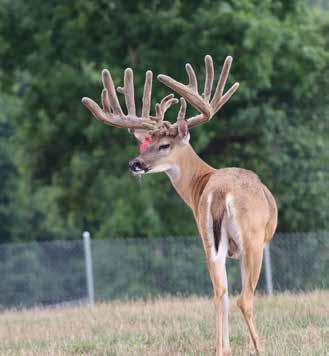
Missile Photo Taken July 31st, 2024
He still remembers when as a young boy, the Game Commission was selling wild fawns to his neighbor’s deer farm for $100 each. “We all know at one point deer were brought in from the wild, just like our cattle and horses were years ago,” John Ervin said. “For many years since then it’s been illegal to bring wild deer into breeder pens. In Pennsylvania they stock fish and pheasants. Why not stock deer into the wild that could help their genetics?” While John Ervin has always bred highly marketable deer, his top priority now includes breeding for markers and GEBV’s along with width, beam length, tine length and solid mass (large mainframe). With the powerful proven doe lines Rocky Ridge has built over the years he believes one of the most important things in growing big bucks is having a strong doe foundation. As a fulltime deer farmer whose income is
100% dependent on his farm, he is grateful for the help of his wife Mary Ann and their five young children. “Bottle feeding fawns is a highlight of working together as a family,” he said. With more than 250 deer (fawns included) on two properties, it keeps them very busy. Joey Harrington, with whom John Ervin has a deep friendship and strong partnership, also has 36 deer on the farm. John Ervin is also partners on more than 100 deer at eight different farms in several different states.
“Just a few days ago I felt like a kid on Christmas morning opening presents when I got my GEBV and codon markers results back from NADR on my 2024 fawns,” he shared. “After lots of time, hard work and money put into genetic improvements, it’s rewarding to see the genetic gains made.”
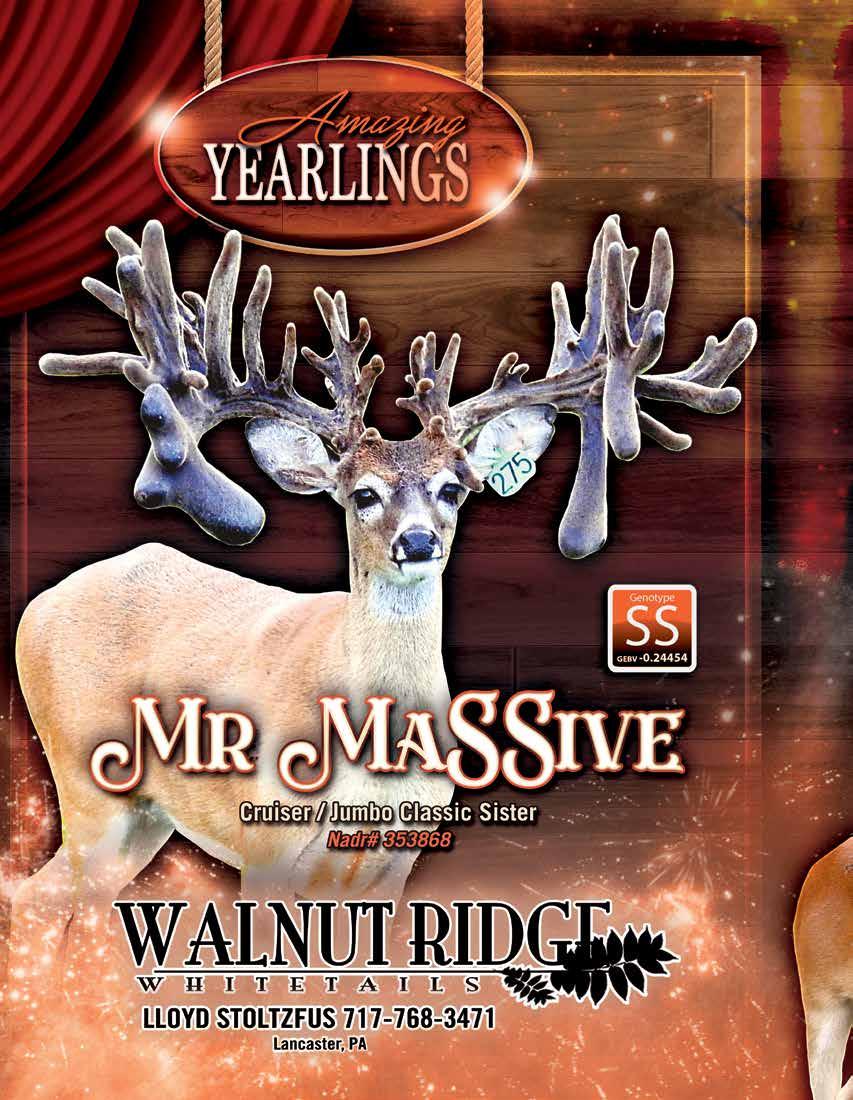
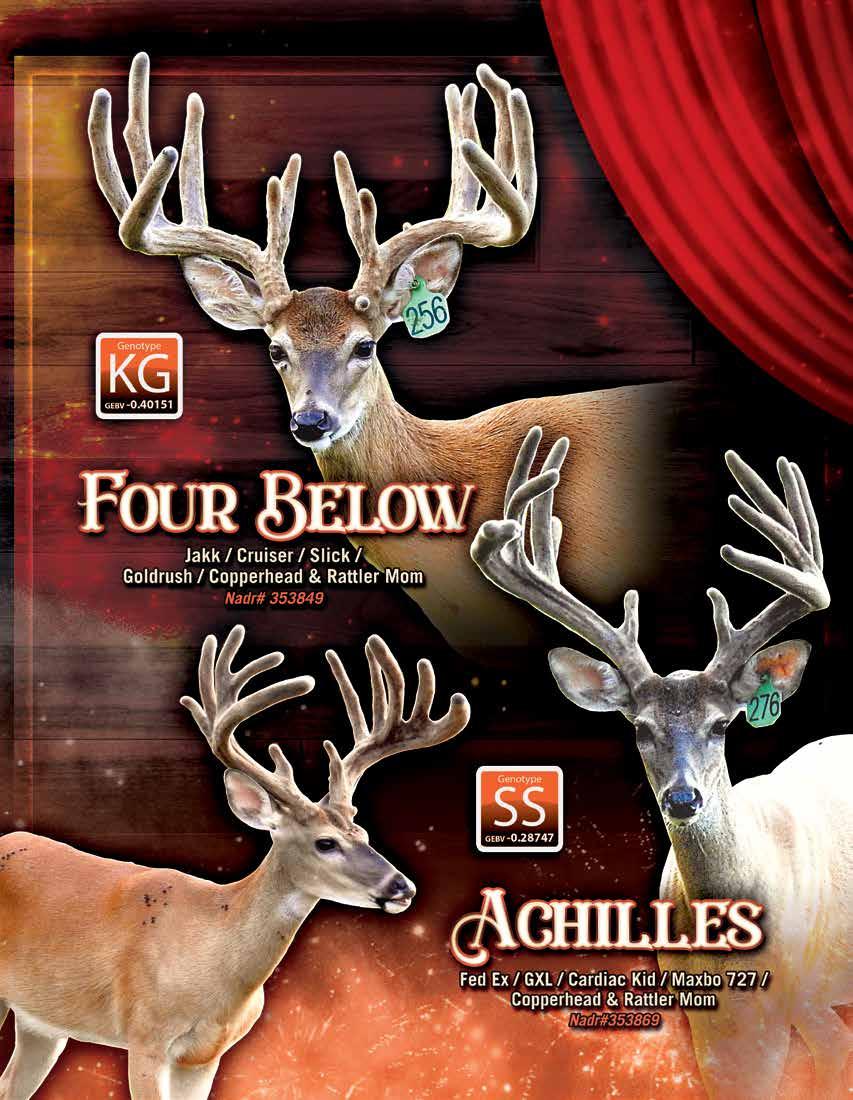
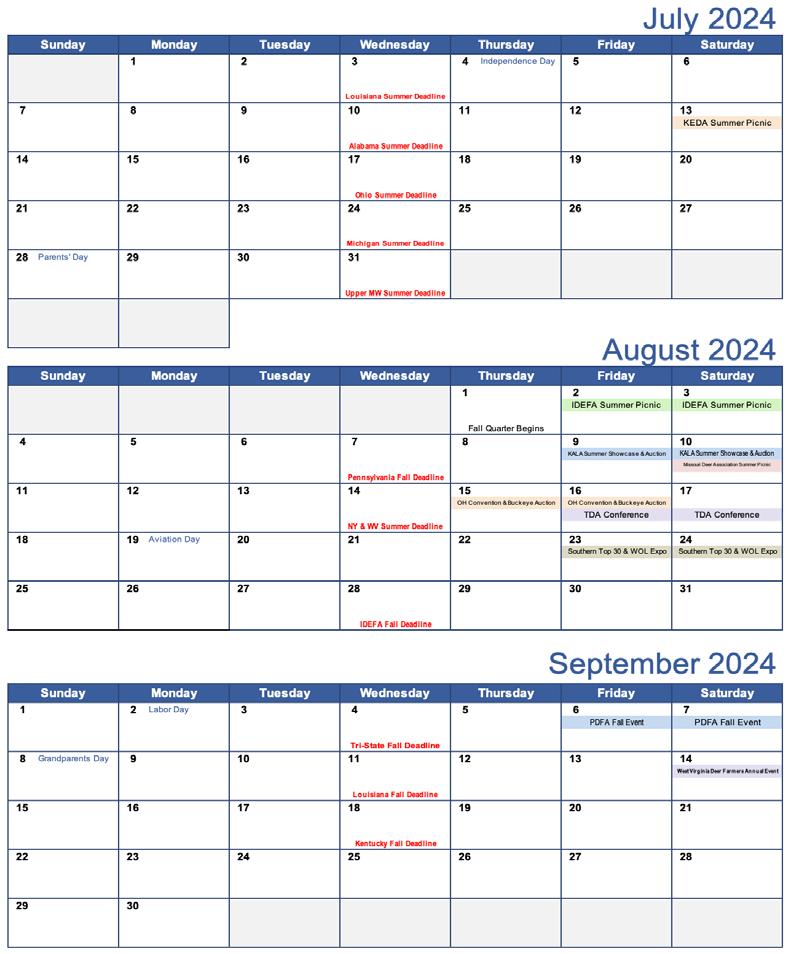





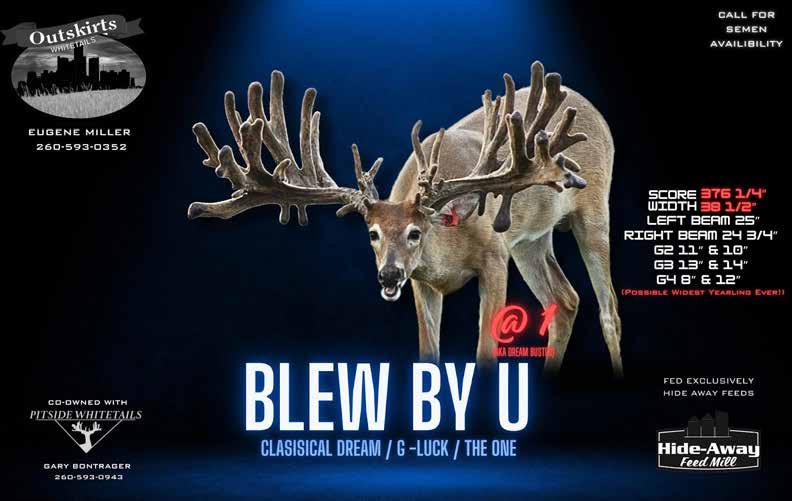

By: Gail Veley • Sponsored by The Alabama Deer Farmers Association
Without a doubt, “insect infestation affects the growth of deer antlers,” offers Dr. Dan Moore, DVM and owner of The Natural Vet, a supplement supply company based out of Unicoi, Tennessee. As a recent attendee of the 2024 Alabama Deer Farmers Association annual convention, Dr. Moore is well-versed in the types of insects that plague deer farmers in southern states such as Alabama and Tennessee. Insects such as mosquitoes, ticks and midge flies “also carry the threat of disease in deer, leading to stress, weight loss, deficient antler growth, anemia and even death in more severe cases,” added Dr. Moore, 68, a retired veterinarian and former owner of two vet practices.
For deer farmers, protecting their deer from disease is akin to protecting their very own families, Dr. Moore has learned. “This is how much deer farmers love their deer. I even knew a farmer once who had two fawns at his wedding just for the sake of having them there,” he said. For the sake of running a successful operation, prevention is the main focus in disease management. While Alabama itself is home to several predatory animals that can harm adult deer and fawns
such as opossums, hawks, coyotes, alligators, raccoons and feral hogs, to name a few, insects cannot be held back by sturdier fences, traps or legal, seasonal hunting practices.
In the warmer, moist and more humid climate found in Alabama “insects must be managed yearround,” Dr. Moore said. These insects predominately include midge flies which can carry Epizootic Hemorrhagic Disease (EHD), horse flies which live on host blood and deliver painful and stressful bites, ticks which can carry Lyme Disease and mosquitoes which can carry a vast amount of diseases such as Eastern Equine Encephalitis, West Nile virus and other diseases that can also affect both deer and humans. Alabama is home to approximately 60 species of mosquitoes that are attracted to water puddles, watering holes, ditches and other waterways.
Eradication methods include fogging with misting systems, insect deterrent sprays such as fly spray and supplements added to feed to make livestock unpalatable to preying insects who depend on their host blood for survival. Understanding which insects are most prevalent at your deer farm can help guide decisions such as which time of day is most effective for fogging, or when to mow or not now grass, or simply leave
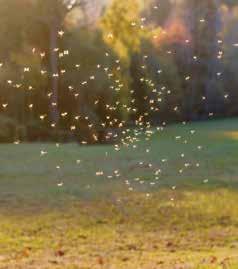
it as grazing land. However, without careful scrutiny and monitoring, these practices could cause misfortune to other wildlife species, floral and fauna that are not harmful to deer.
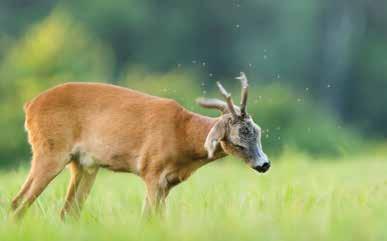
Many deer supplement products, available from a wide variety of local and on-line feed stores, were primarily derived from Dr. Moore’s horse products after it was discovered that deer found them appealing. “They can provide deer farmers with natural solutions to common problems,” Dr. Moore said. “My father went through threeyear illness during which I lost faith in traditional medicine. I felt that there could be better and more natural ways to propagate health for ourselves and our domestic animals.”
“I highly recommend that all deer farmers investigate natural solutions for the dilemmas they face in raising their deer,” Dr. Moore. “This can also include more natural dewormers, insect sprays and feed management practices. Considering the big picture, I think this is the best thing to do.”
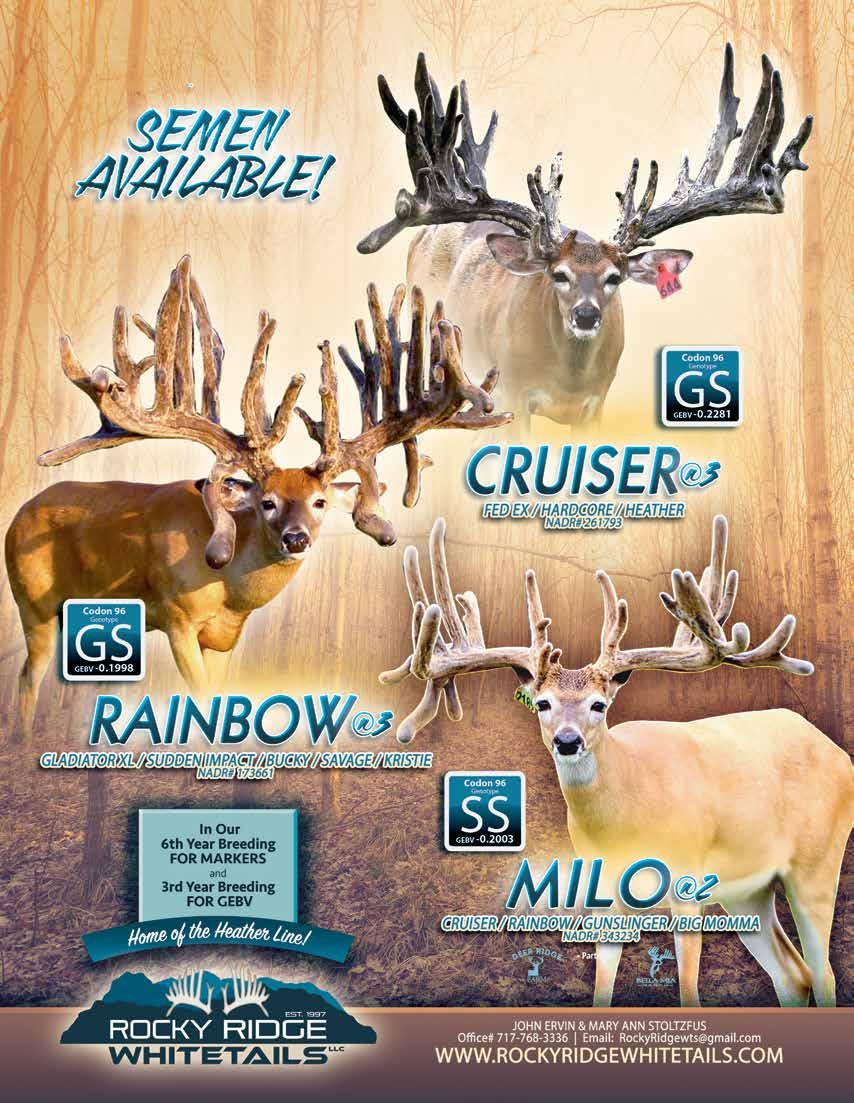
By: Gail Veley • Sponsored by WOL
Preparing your bucks for the hunt begins long before warm and humid summer months turn into cooler and crisper fall days. Although the feeling of autumn ascending upon the earth makes hunters usually think of only one thing – hunting – preserve owners have begun preparing for those hunts months before. In fact, it may feel as though they are always perpetually preparing in one form or another. However, February can be a crucial month in this overall process. “After the hardest part of the winter is over, I start in February making sure I have enough protein available to my bucks in my preserve who were not harvested the year before,” said Brandon Bollinger of 2 Brothers Whitetail in Loranger, Louisiana. “Protein gets them from the rut back into condition. The key is their body condition.”
An essential source of protein can be found in clover plots. “You want to make sure those are ready for spring,” Bollinger, 47, said. “The key to growing big deer is putting a buffet in front on them and as little amount of stress as possible.” Bollinger, who makes a point of closely watching and surveying his bucks all summer, starts rolling his preserve cameras in July, in an effort to
ensure those bucks, currently residing inside, are ingesting enough adequate protein to meet size standards for the upcoming season. Bucks currently residing in pens are also closely monitored as plans progress to stock the preserve. And although Bollinger raises enough of his own bucks to not need to buy more, he feels that selling some of his own while acquiring some from other farms, keeps his inventory varied and perhaps more appealing to hunters.
Bollinger, in addition to knowing how to raise the most appealing buck, has also learned through the years the most appealing circumstances of introducing bucks into a preserve. “I start in August while they are still in velvet,” he said. “Don’t do it the day before a hunt. Put them in the preserve in August while they are in velvet and learning where they want to be, and they are calm. You also need a 30-day buffer to make sure the medications they need for transport are out of their system.” Preceding these precautions is the most valuable advice: Introduce them into the preserve at night. “You have much less of a chance of losing them because it’s not as hot.” Although some preserve owners prefer a method of introduction referred to as “soft launching” by first placing deer in a large pen inside the preserve, Bollinger finds that “day of” or prompt introductions can work just as well.
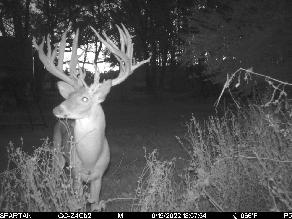
In an effort to make this type of introduction as safe as possible, Bollinger also advises to not only have food and water sources located interiorly of your preserve, but all along the fence line as well, as deer tend to gravitate to the fence
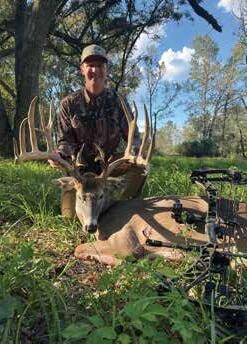
and pace and without easily accessible water and food, could dehydrate and die. In also realizing that deer learn the sound of an ATV or truck means food is coming, he makes a habit out of dropping hunters off during hunting season from a vehicle, making it easier for them to slip into advantageous places. Although Bollinger takes every precaution necessary to make sure his deer thrive, fatalities are inevitable. “I always have or carry a 10 buck “buffer” from what I grow compared to what I buy, which is about a 20% buffer overall,” he explained. “We hunt about 60 bucks a year.”
While the thrill of the hunt is the most compelling part of deer farming, feeling compelled to create understood payment terms between seller and buyer is what may keep a deer farmer in business. “When you are buying stockers, you should have a very clear warranty period. This is very important. The general rule is seven days. Should deer purchased not survive beyond seven days, the seller usually compensates the buyer in some form or another, Bollinger said. “Make sure you have an agreement in place.”
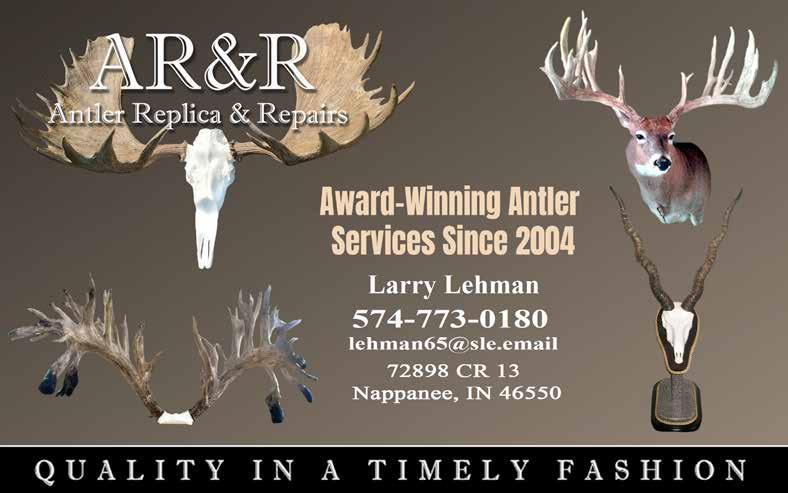

Micr ochips
• USDA 15 digit ISO
• 9 digit Avid and 10 digit Euro.
Avid Reader s
• Avid MiniTracker Livestock Reader specially priced.
• Blue Tooth® option.
• Dependable Fast, Accurate read EVERY Time!
• U.S.A. made and service.


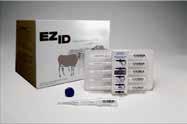
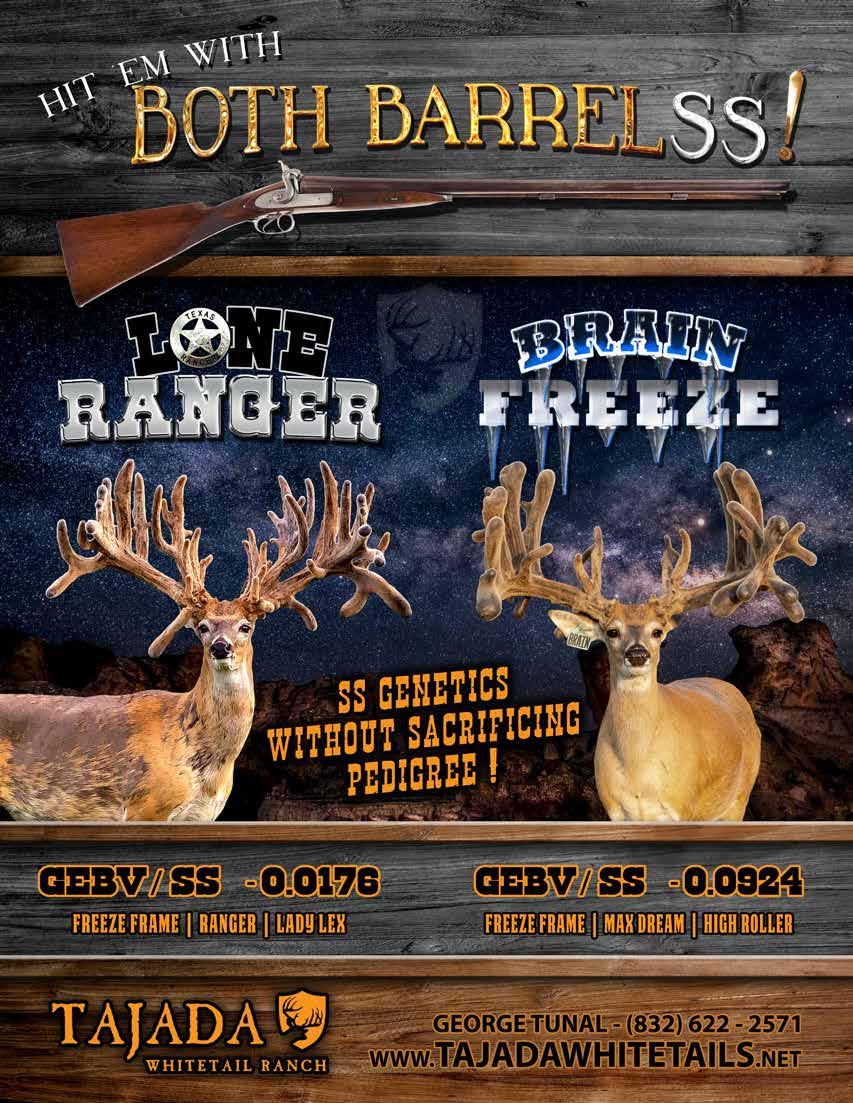

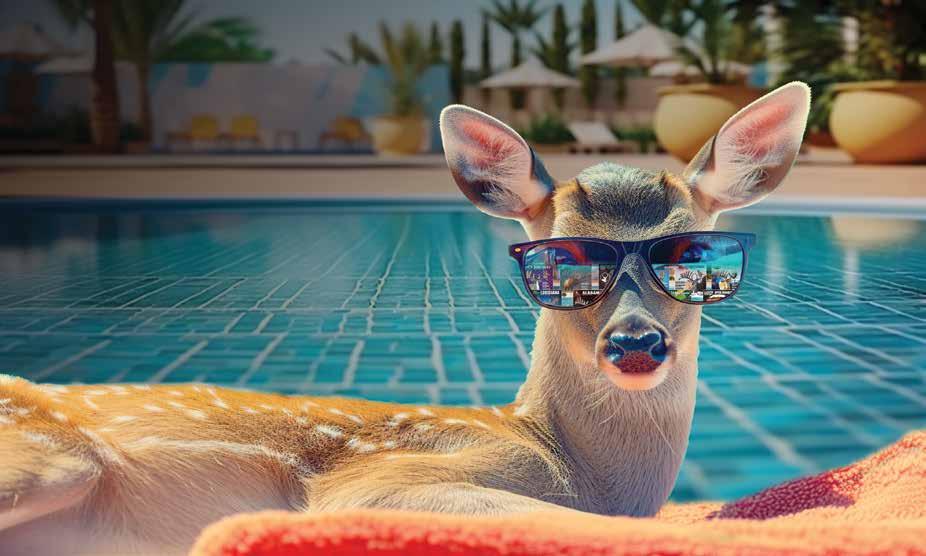


Pennsylvania
Southeast
Tri-State
United
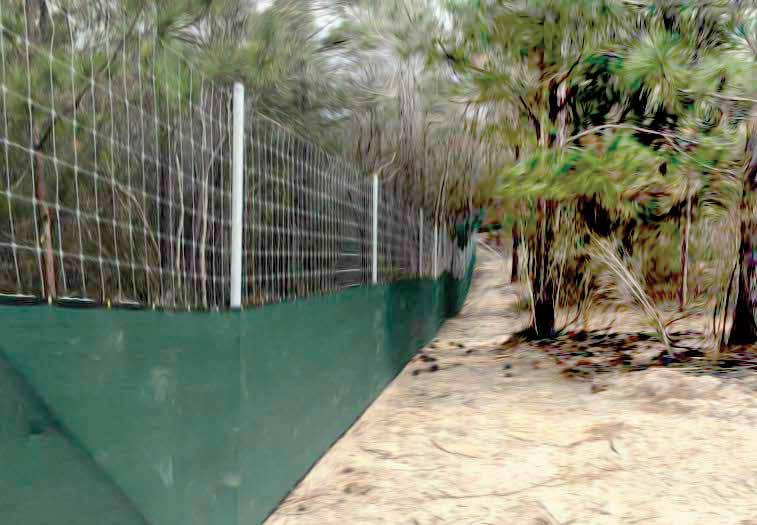
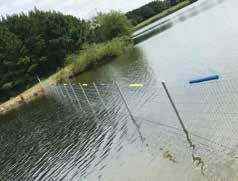
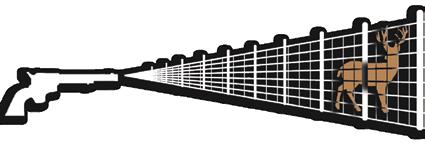
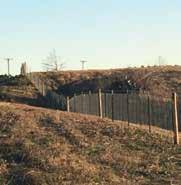



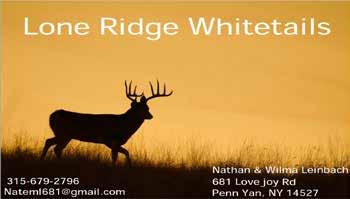
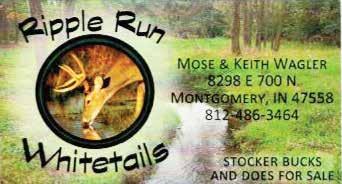
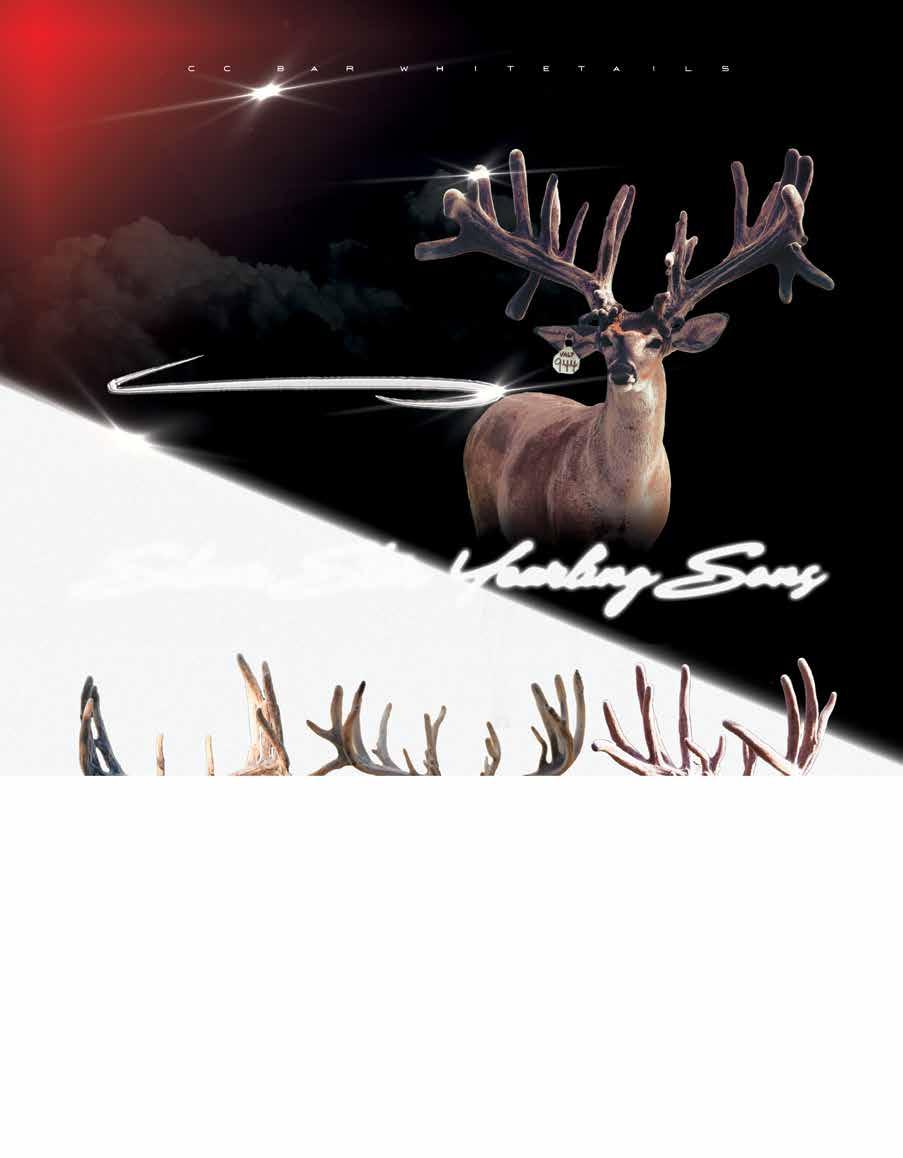

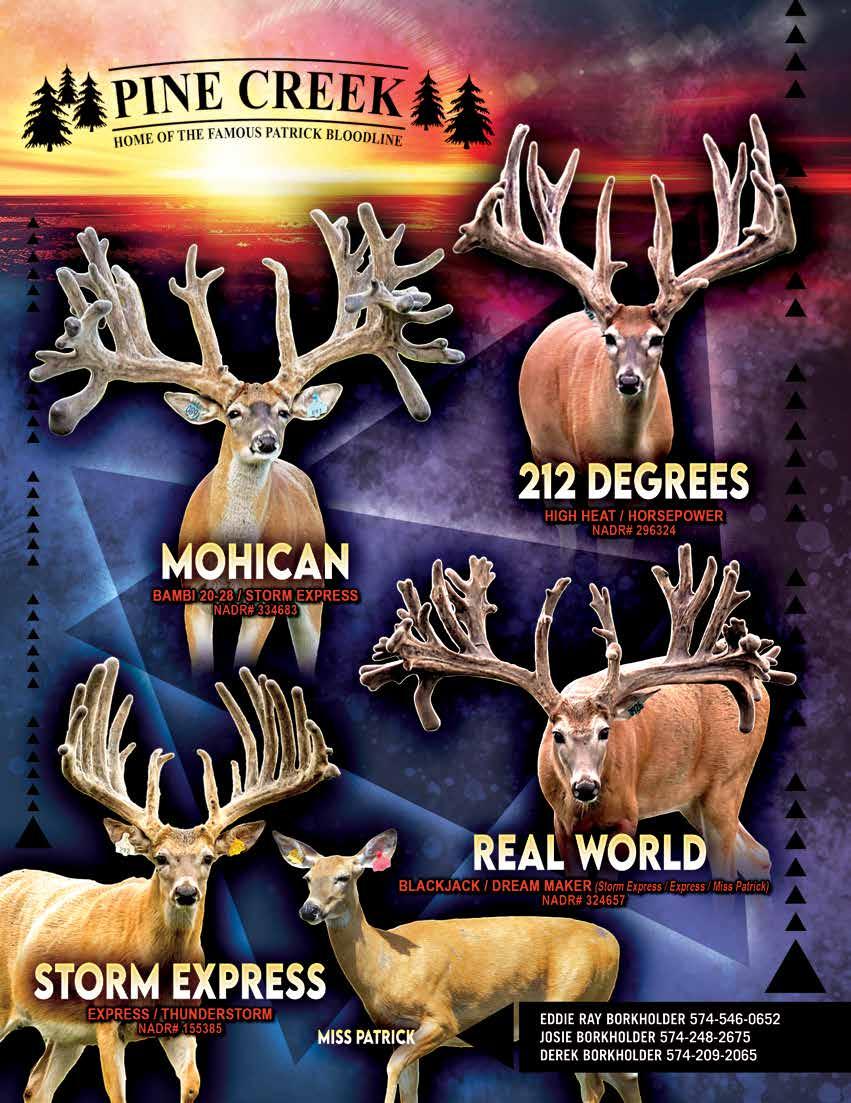







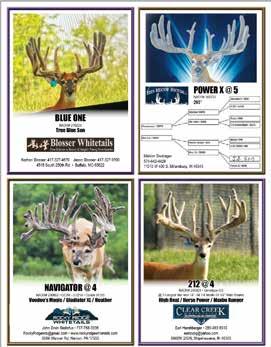
Advertisers running ads in any of the 2024 Multi State Association Magazines will have the opportunity to place a single buck update photo in the D&K Design September Showcase Book.
Reservation for space and buck info will be due no later than August 21st, 2024. If you have an existing picture ready to go, that will also be due at that time. If you would like to send in a last minute photo of your buck, the cutoff date is Monday, September 2nd by 9am CST. Placement will be in order of first come first serve. Printing and mailing will start September 4th and be in hand between September 16th-20th. Just in time for semen sales getting ready for Breeding Season. These will be mailed to members of the 19 state associations we service. (More information will be mailed out to all current advertisers closer to the date)
Cost: $175.00 each 1/4 page ad or 4 for $650.00 (Pre-register and we will contact you for further information)

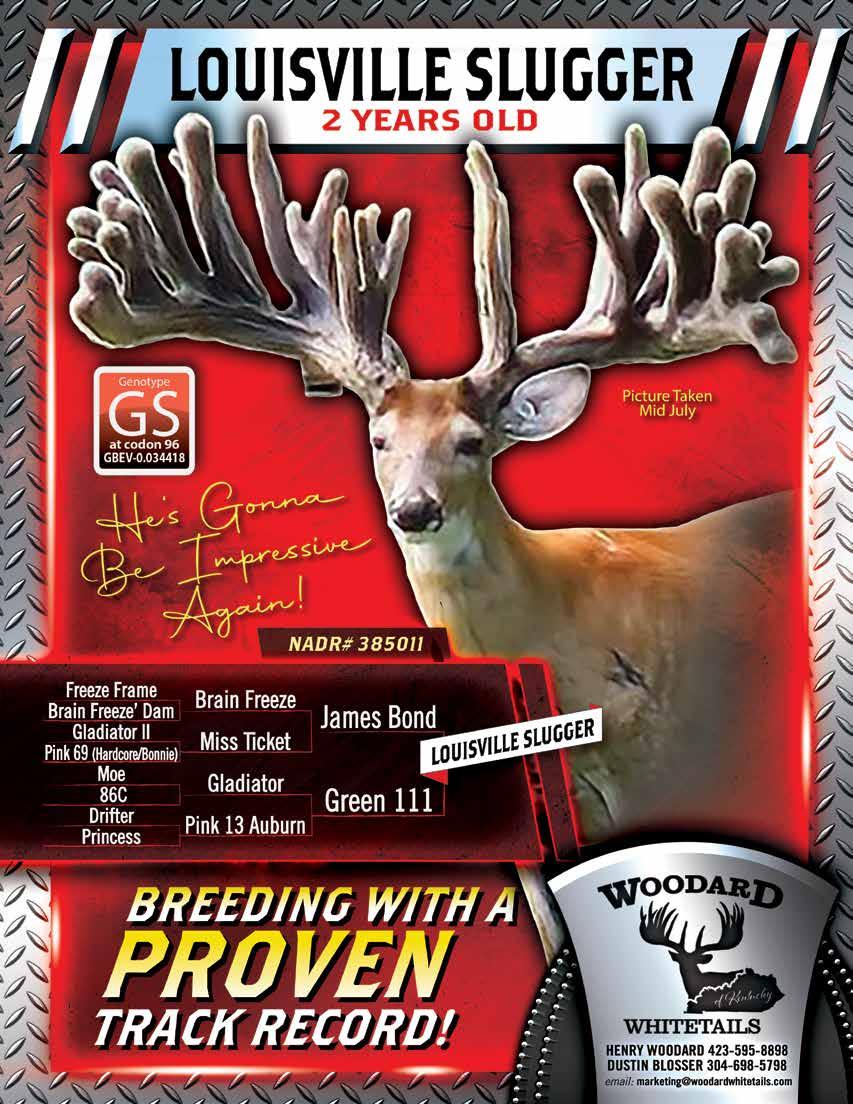
By: Gail Veley • Sponsored by the Illinois Deer Farmers Association
Establishing legislative relationships when there isn’t a pressing issue can be fundamental in solving issues if and when they do arise, explains Dr. Ray Favero of Whitetail Genetics in Braidwood, Illinois. “Being able to see the people one-on-one that make legislative decisions and deepening these relationships, helps in bringing both sides together to solve issues when that time comes,” he added. In a time where the farmed deer industry is still growing, it has never seemed more popular. With that, the urge to combat CWD has gained matching momentum and as a result, great conflicts in some states among deer farmers and the powers that be. However, some states have experienced firsthand the benefits of resolving issues, while others are just starting their own battles.
For example, each spring in Pierre, South Dakota, members of The South Dakota Deer and Elk Association sit down face-to-face with members of the South Dakota Animal Industry Board to discuss issues and solve problems such as CWD. In 2021, Missouri deer farmers rejoiced after a revised Wildlife Code was established, giving them more leeway for dealing with CWD testing from deer mortalities, among other beneficial things. In Oklahoma, the recent November 1st, 2023, passage of House Bill 1844 has opened
their borders for receiving deer, greatly aiding the ability to operate on a larger scale. Oklahoma also recently passed legislation enabling the release of farm raised deer into the wild, to help introduce CWD resistant animals into wild herds. These are just a few examples of success stories. Yet, in Minnesota, deer farmers have only recently begun a legal battle to change difficult rules and regulations scheduled to take effect September 1st of this year.
However, none of the progress made within states enjoying more relaxed regulations would have taken place, without all sides being willing to come together and discuss concerns face-to-face. In Dr. Favero’s home state of Illinois, regulations for deer farming have never been “terribly bad,” he said. “One of our large problems a while back was that landowners would call the Illinois Department of Natural Resources (IDNR) and ask about deer farming. The response from the DNR was ‘no it’s illegal and the department is not issuing any new permits.’ After years and personnel changes and talking with the DNR, staff finally began telling the landowners the truth. Having state deer association representation through lobbyists is a vital component in accomplishing goals such as this, as well as opening lines of communication for correct


information to be obtained. If you think strictly in terms of partisan politics, you might not get far,” he shared. “In the Illinois House and Senate, we are about 70% liberal but through a lobbyist you bring both sides together and compromise, especially with one that’s been around for a while. The American Farm Bureau is an excellent way to find lobbyists, or through a referral from another allied organization. Make sure a couple of your state deer association members are also members of the Farm Bureau and Farmers Union, as both sides of the political isle need to be covered.” These proactive measures can also potentially assist in explaining the economic benefit that deer farming is within a state. “Here in Illinois, hunting preserves are part of our growth,” Dr. Favero emphasized. “Now we have seven or eight where we used to only have two or three.” Standing behind every hard-working deer farmer in North America is NADeFA. Each year, selected representatives spend a few days in Washington, D.C. to interact with national lobbyists and to mingle with senators and individuals from state departments. “We may not necessarily discuss specific issues,” Dr. Favero said. “But it is rather all about relationship building. They’ve been very, very good trips. These trips to Washington are very beneficial to NADEFA and are very personally rewarding.”
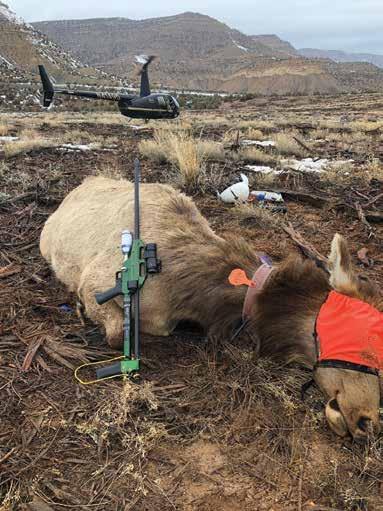

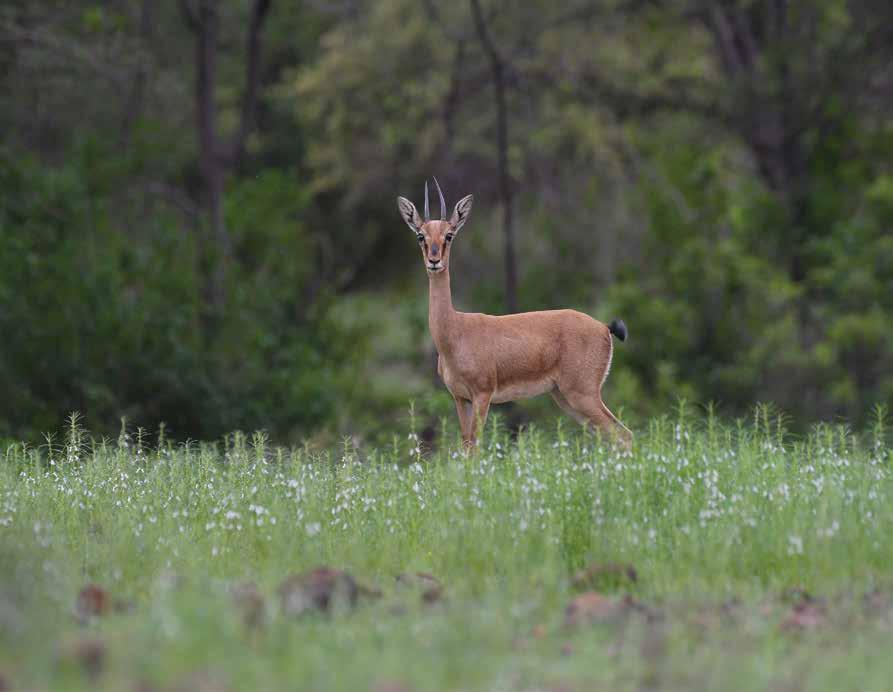


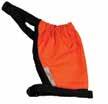

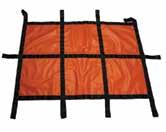




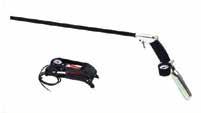
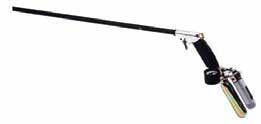
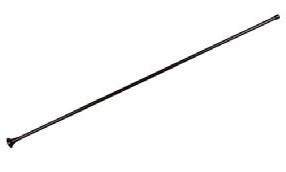
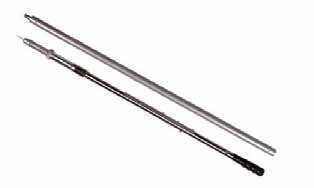
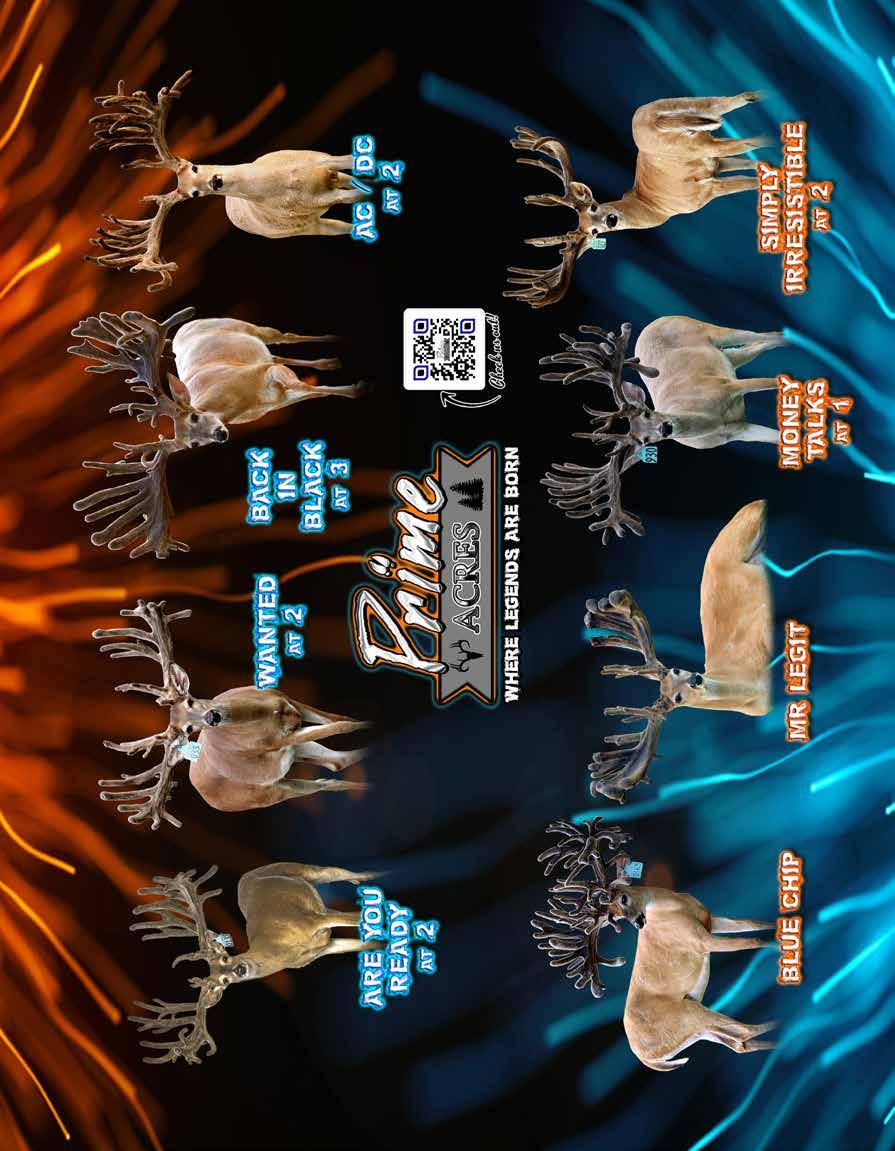
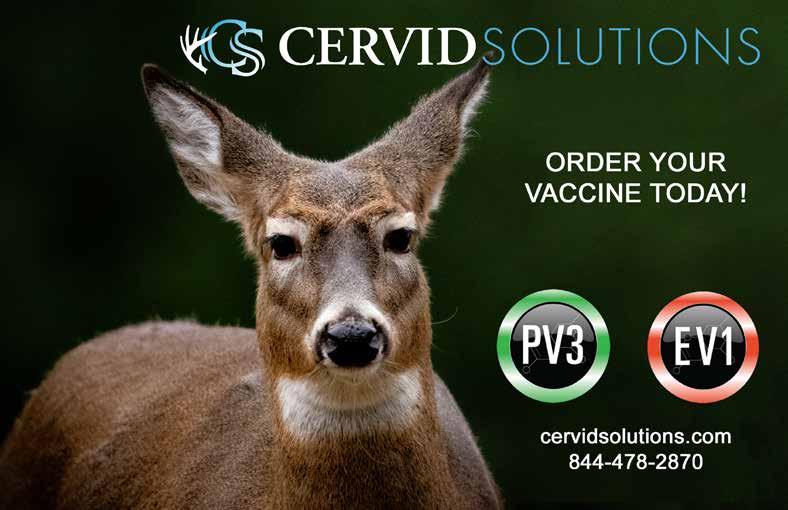
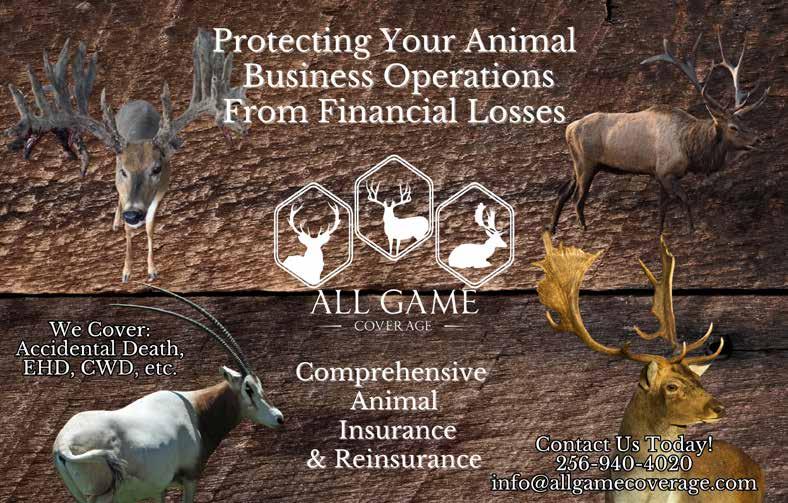
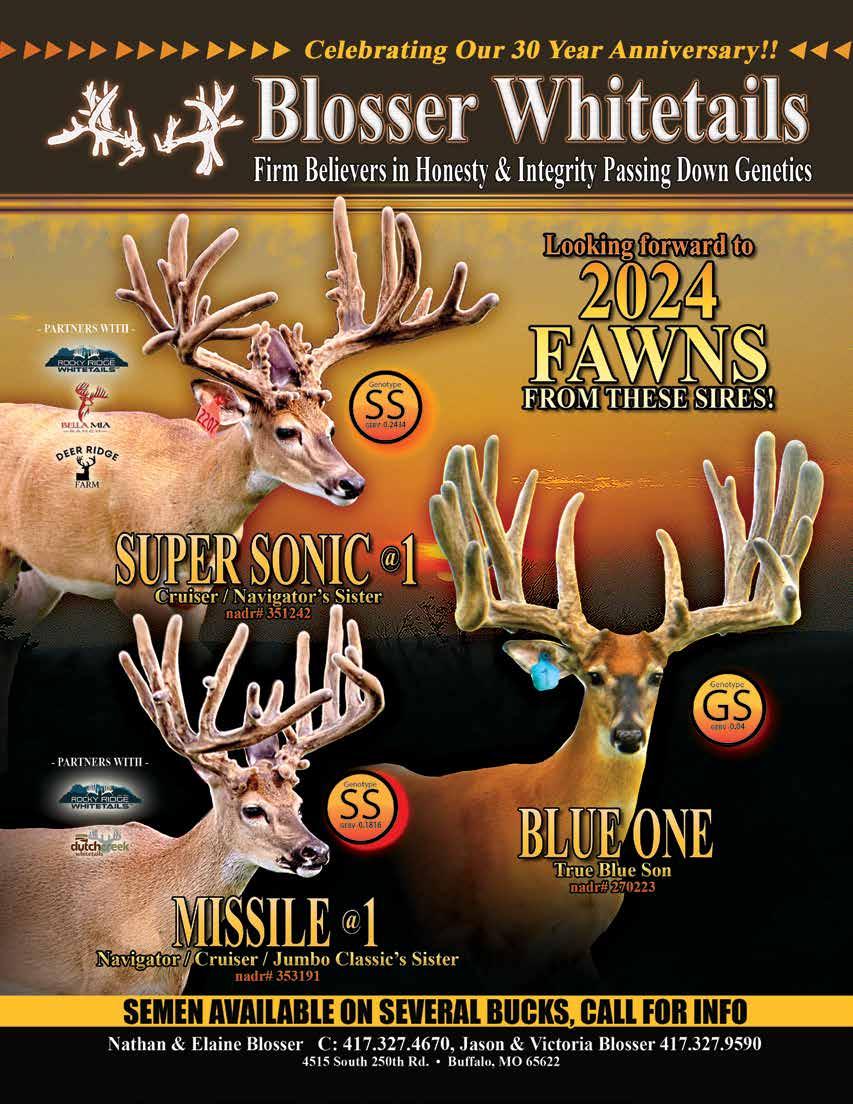
IF YOU HAVEN’T TRIED PNEU-DART’S RDD S, YOU’RE MISSING MORE THAN YOUR TARGET
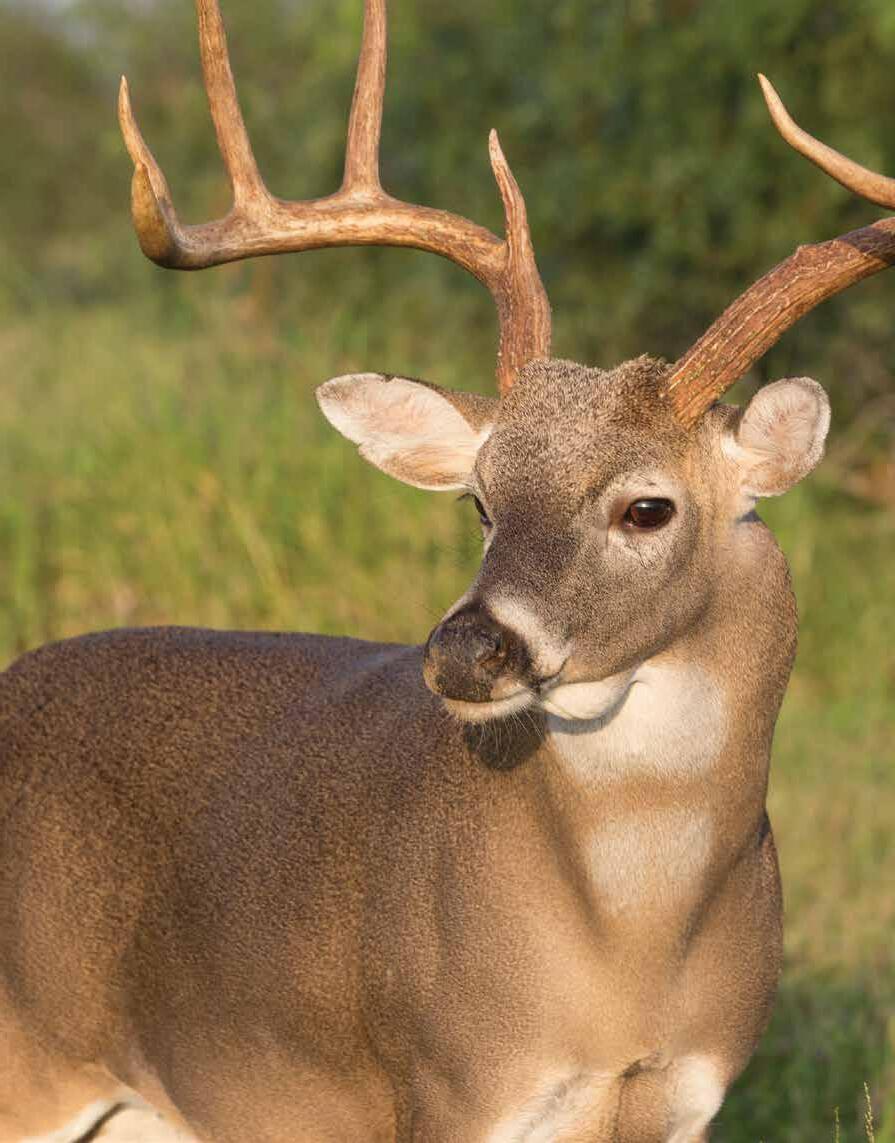
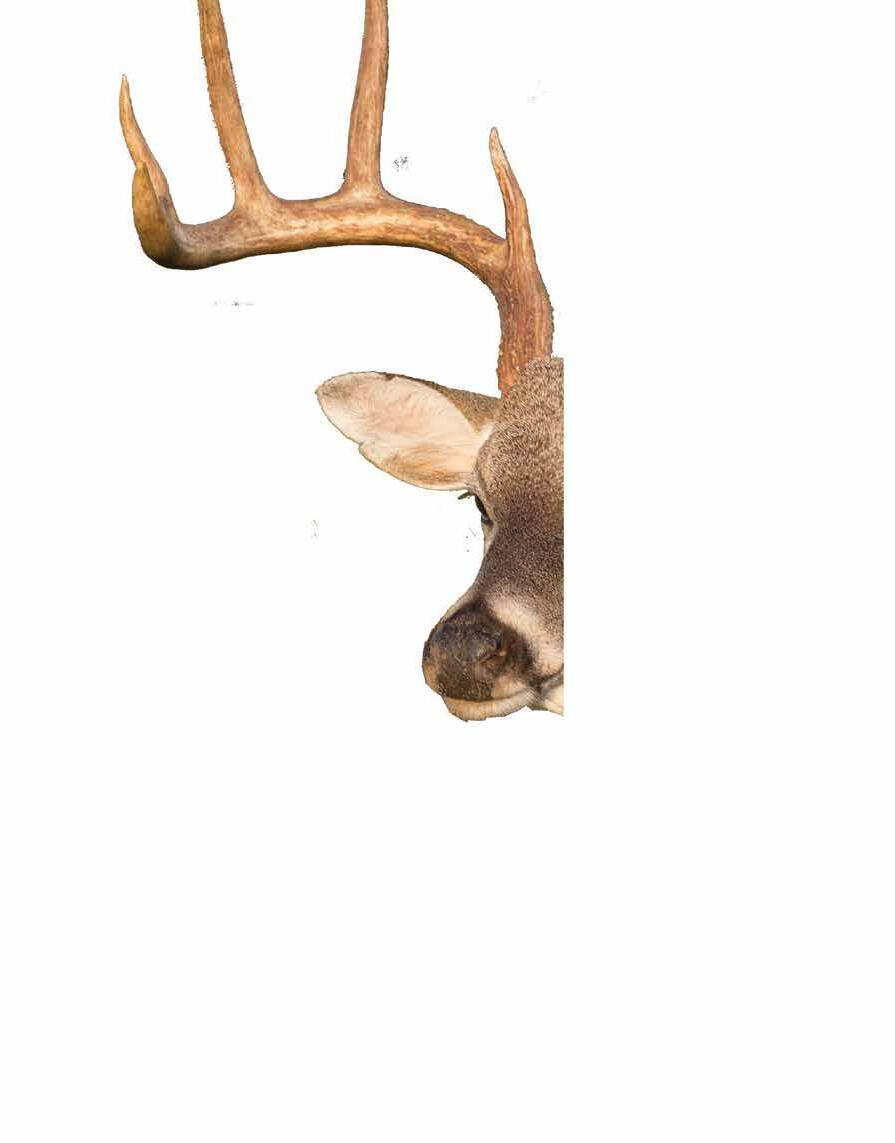


By: Gail Veley • Sponsored by The Minnesota Deer Farmers Association
Finding creative and lucrative ways (within the scope of the deer industry) to subsidize your deer farm may prove beneficial and ultimately cost-effective, offers Mark Volk of Volk Whitetails in Royalton, Minnesota. When Mark and his wife Mary started their 8-acre farm in 2014, fate would later point them in a direction they never saw coming. Today, in addition to raising deer, they also own and operate CuddliEZ, a custom embroidery company that manufactures deer masks with farm logos that keeps Mary extremely (if almost) too busy. This demonstrates there are various ways to turn an additional profit from deer farming, other than just the raising and selling of deer, Volk, 40, explained.
Some of these ways include:
Deer Velvet: Widely used in oriental medicine, deer velvet, when taken as a supplement, is thought to increase joint mobility, overall flexibility, strength, energy and blood flow. Found growing on the outside of buck antlers in the summer, deer velvet contains important chemicals, amino acids and collagen. Antlers
in velvet that are properly trimmed and stored from whitetails, red deer and elk can be sold to interested manufacturers, such as Cervid Labs USA, who purchase elk antlers. Other companies who purchase antlers in velvet can be found with online research.
Deer Capes: A deer cape, essentially the hair and hide from the nose to shoulder of a deer, if properly skinned, can be sold to the taxidermy market to enhance wall mounts. They can also be prepared and used as stand-alone decorative displays.
Urine Collection: Doe and buck urine, used to cover up the scent of hunters while attracting deer to a hunting location, is a popular go-to for hunters. Several deer farmers have taken to the business of collecting, processing and selling deer urine as the demand is very high. Through the construction of special collection stalls, substantial amounts of urine can be collected in a short amount of time, adding to the appeal of starting or contributing to a urine collection and distribution business.
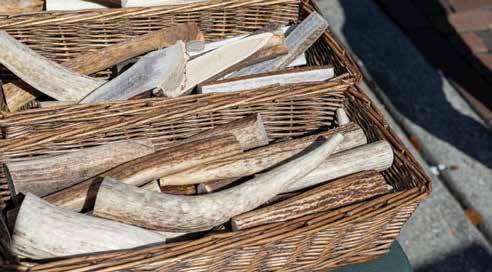
Antler Collection / Selling: Hard deer antlers are used to make a variety of useful items such as tools, jewelry, chew bones for dogs and much more. Single antlers and antler sheds are bought from deer farmers from a wide variety of U.S. companies and are usually priced from $8 to $15 per pound.
Antler Replication / Taxidermy:
Although very time-consuming, antler replication and taxidermy is highly sought out as the demand from hunters for these services is very high. Those in this profession are never without work and devote long hours to perfecting their craft and keeping customers happy.
Farm Tours: A fascination with deer, particularly whitetails, is the driving force behind every deer farmer’s desire to raise deer. Likewise, the general public often shares this fascination and curiosity. For several years Mike Czora and Sandy Malone of Prime Whitetails in Rush, New York offered “Walk with Whitetails,” at a reasonable price to individuals and families interested in an up close and personal experience, after they realized how popular it could be. Turns out they were right.
“Our secondary deer business of making embroidered deer masks has helped us cover the cost of our feed,” Volk said. “It can be vital to look for other ways to financially subsidize your farm. We all know how quickly costs add up and how important having discretionary income can be.”
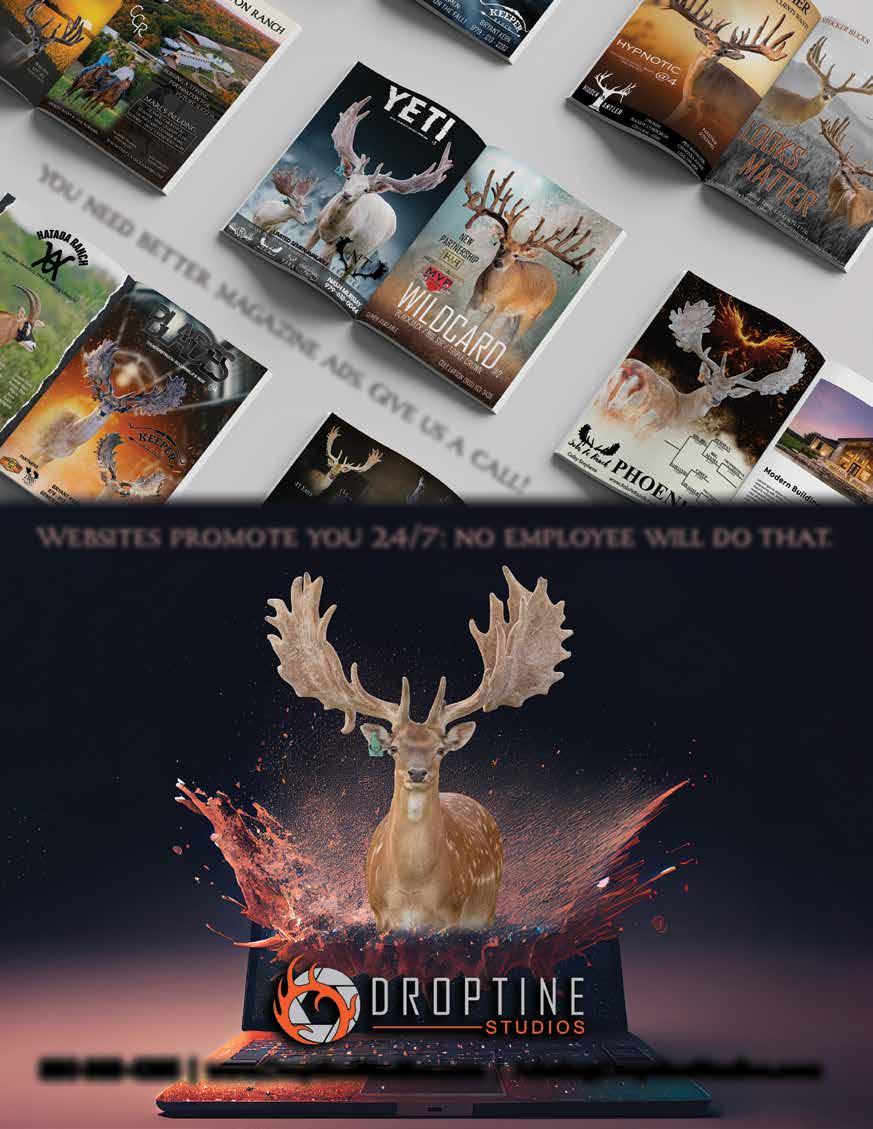



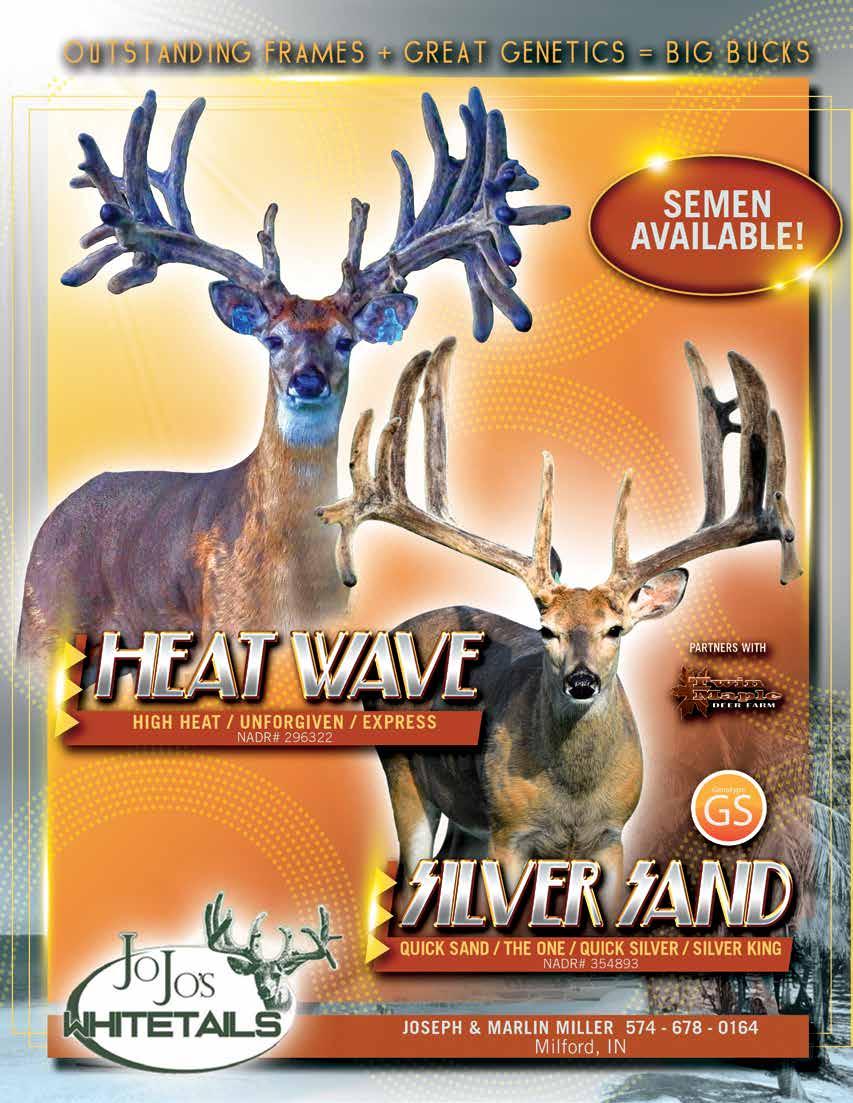

Adventure
Backyard
Barbecue
Butterflies
Canoeing
Festivals
Fireworks
Gardening
Hayride
Humid
Lemonade
Mosquito




Strawberries
Sunshine
Watermelon
Last Issues Answer Key
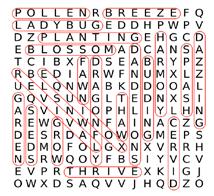
The rules for sudoku are simple:
A 9x9 square must be filled in with numbers from 1-9 with no repeated numbers in each line, horizontally or vertically.
To challenge you more, there are 3x3 squares marked out in the grid, and each of these squares can’t have any repeat numbers either.
Last Issues Answer Key



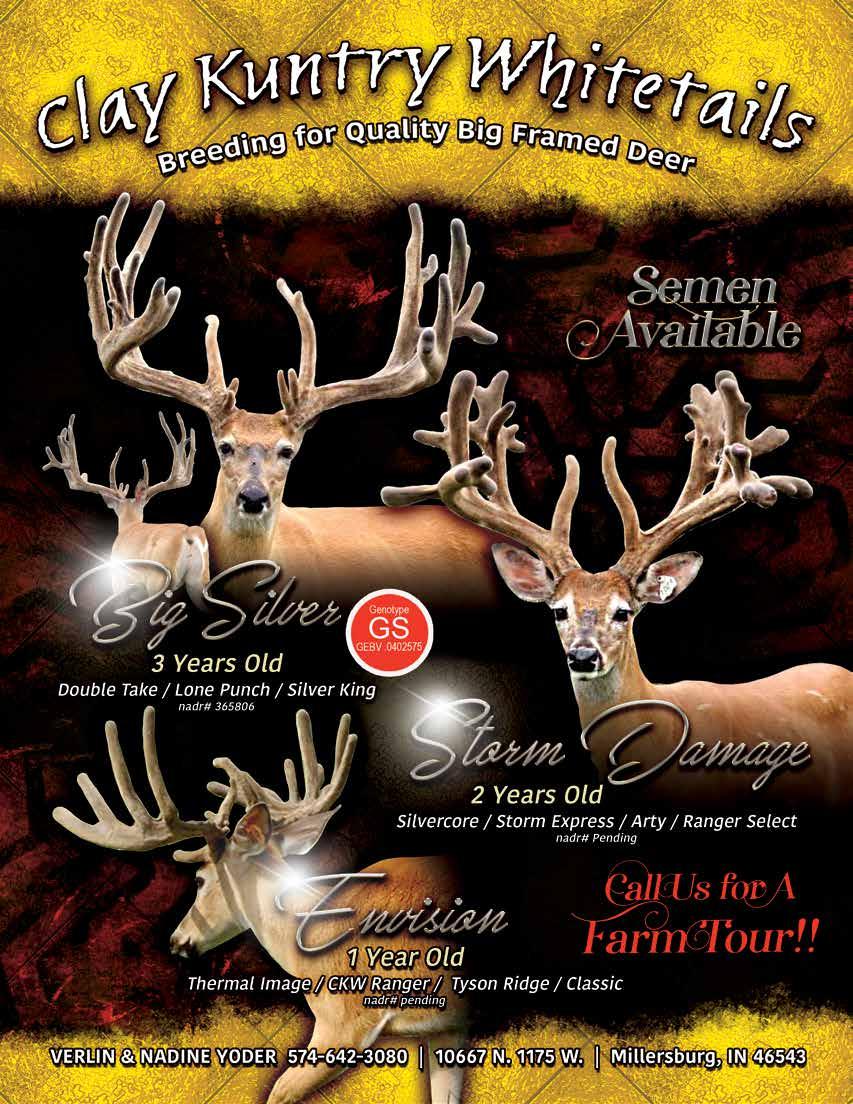


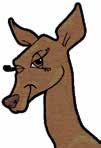
44 ISSUES FOR 1 YR. (11 Publications x 4 quarters) - 18
$180 / Issue ($7920. / Yr) ~ Full Page
$102 / Issue ($4488. / Yr.) ~ Half Page (55-59%Discountoff singleadplacement)

16 ISSUES FOR 1 YR. (4 Publications of your choice x 4 quarters)
$204 / Issue ($3264. / Yr) ~ Full Page
$112 / Issue ($1792. / Yr.) ~ Half Page (48-54%Discountoff singleadplacement)

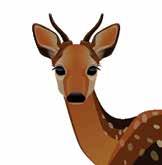


4 ISSUES FOR 1 YR. (1 Publication x 4 quarters)
$238 / Issue ($952. / Yr) ~ Full Page
$130 / Issue ($520. / Yr.) ~ Half Page (40-48%Discountoff singleadplacement)



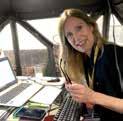
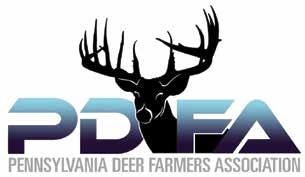
(Please check one) ❑ New ❑ Renewal - Member #____________ (if known) Membership Name:___________________________________________Date________________ Farm Name:_____________________________________________________________________
I am joining as (please check one)
❑ Active PA Propagator* (voting privileges) - $100.00
❑ Associate Member (non-voting) - $75.00
❑ Life Member* (voting privileges) - $1,000.00
*Must be a Pennsylvania resident
Please check all that apply:
Farm ❑ Hunting Ranch Ranch Name & Contact info if different from Farm:
I hereby make application to the Pennsylvania Deer Farmers Association, Inc. and certify that the information I have provided is true and correct to the best of my knowledge.
Signature:___________________________________________ Date:______________________
Other Please mail application with payment to: PA Deer Farmers Association PO Box 394, Harrisburg, PA 17108
